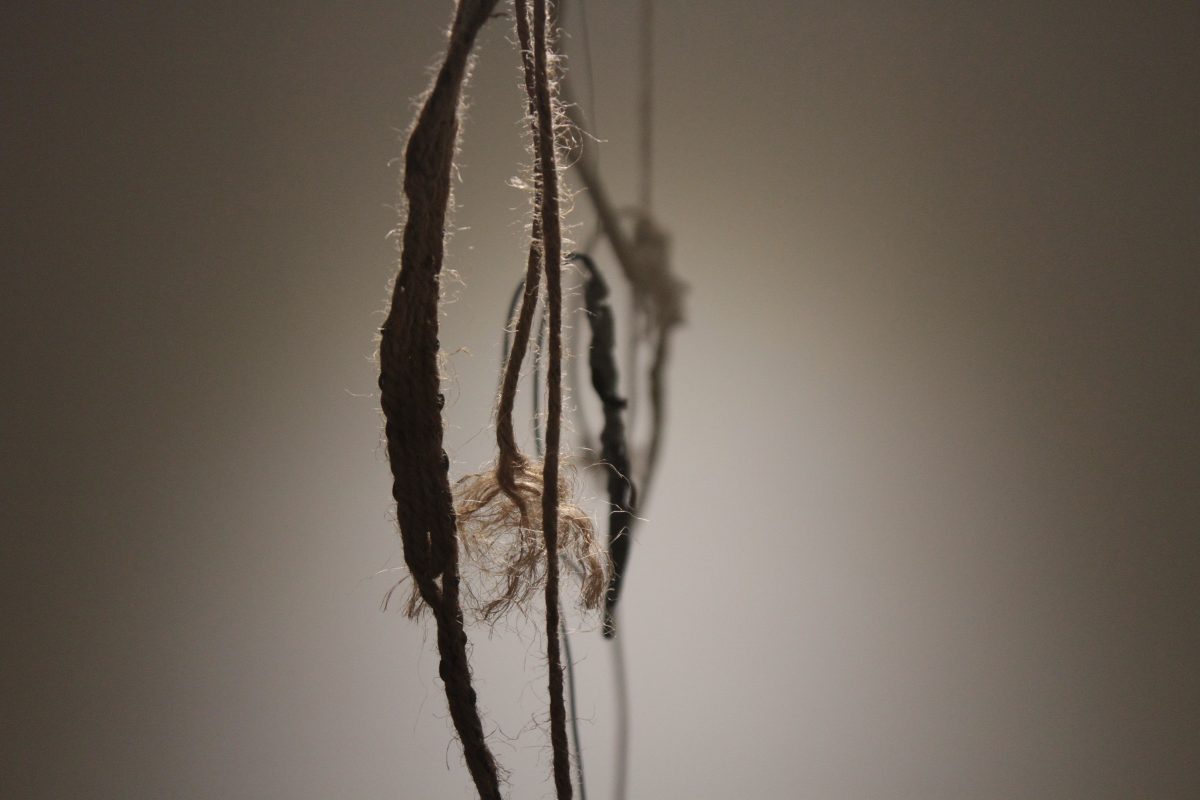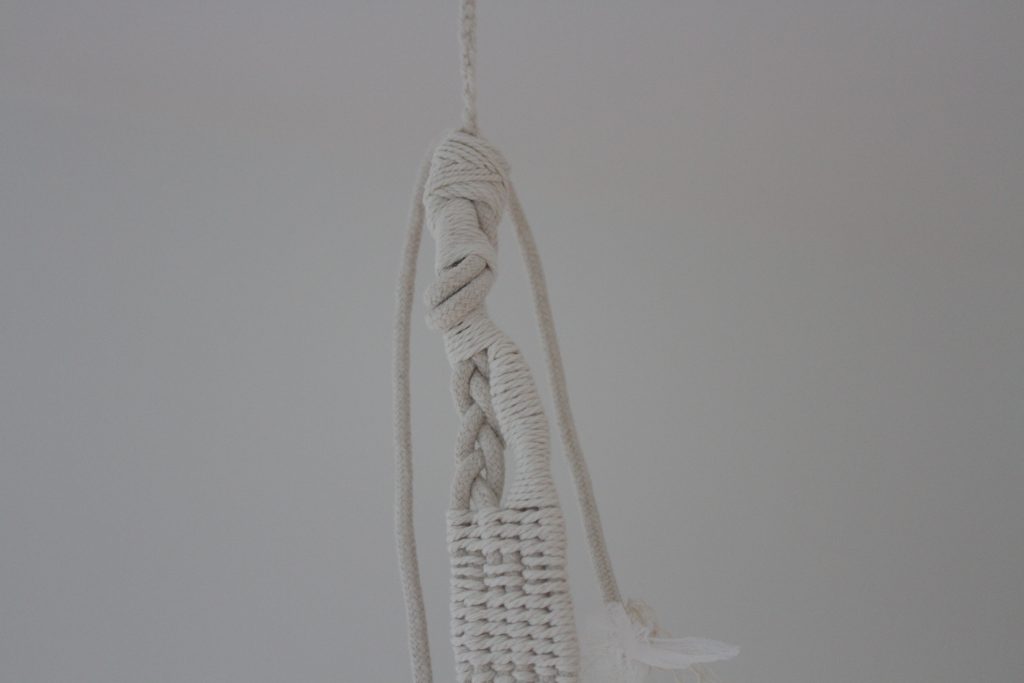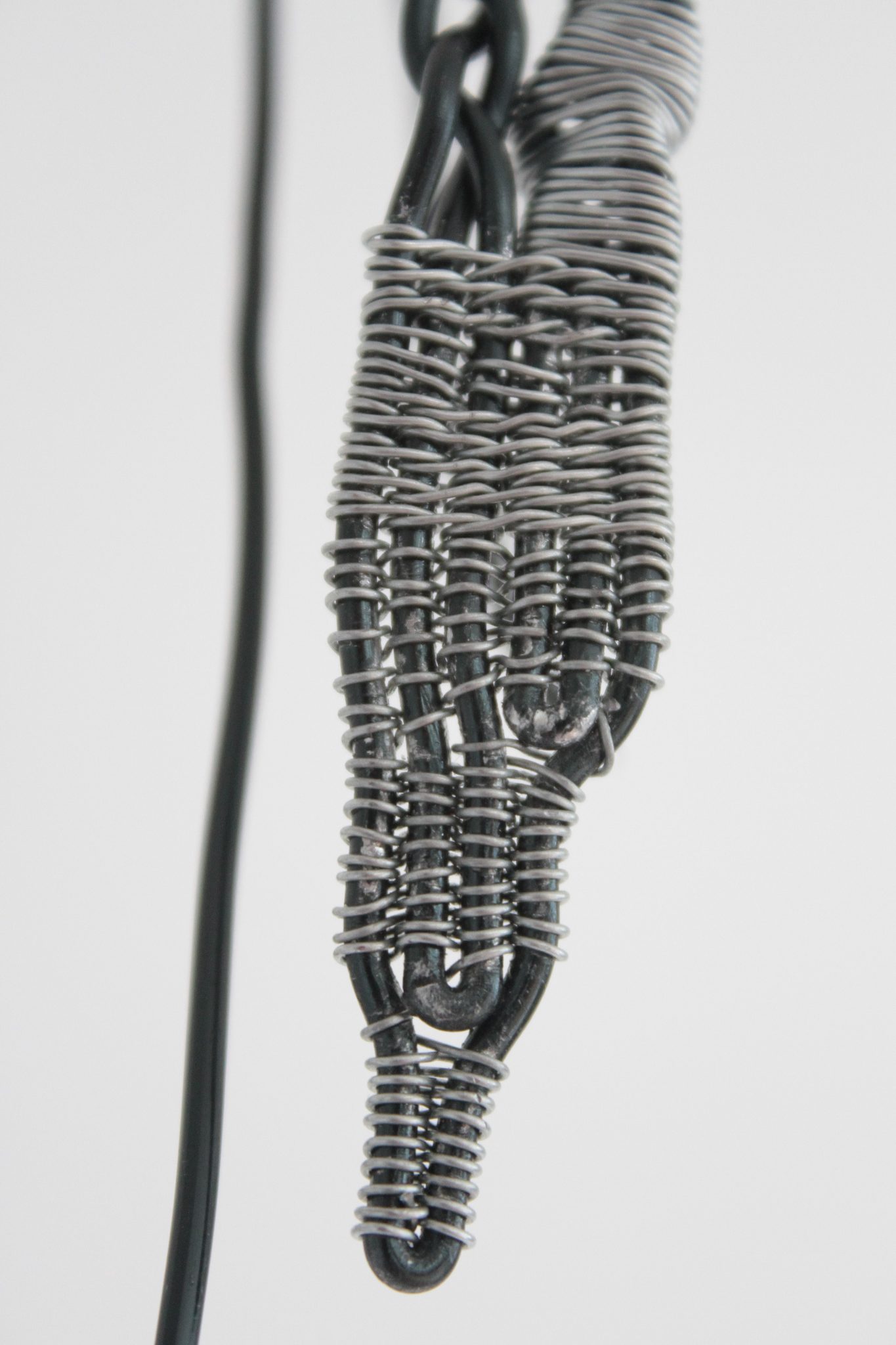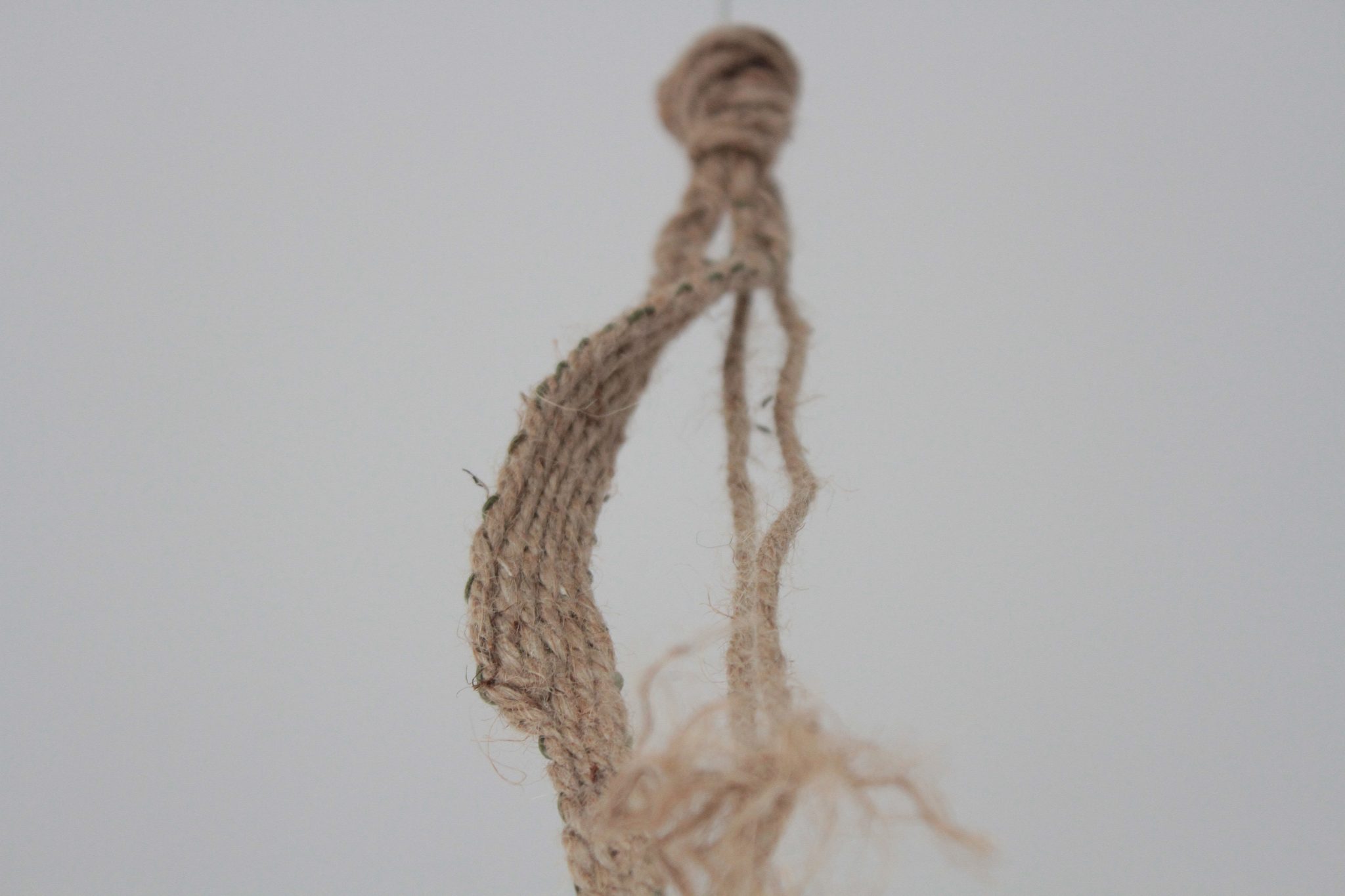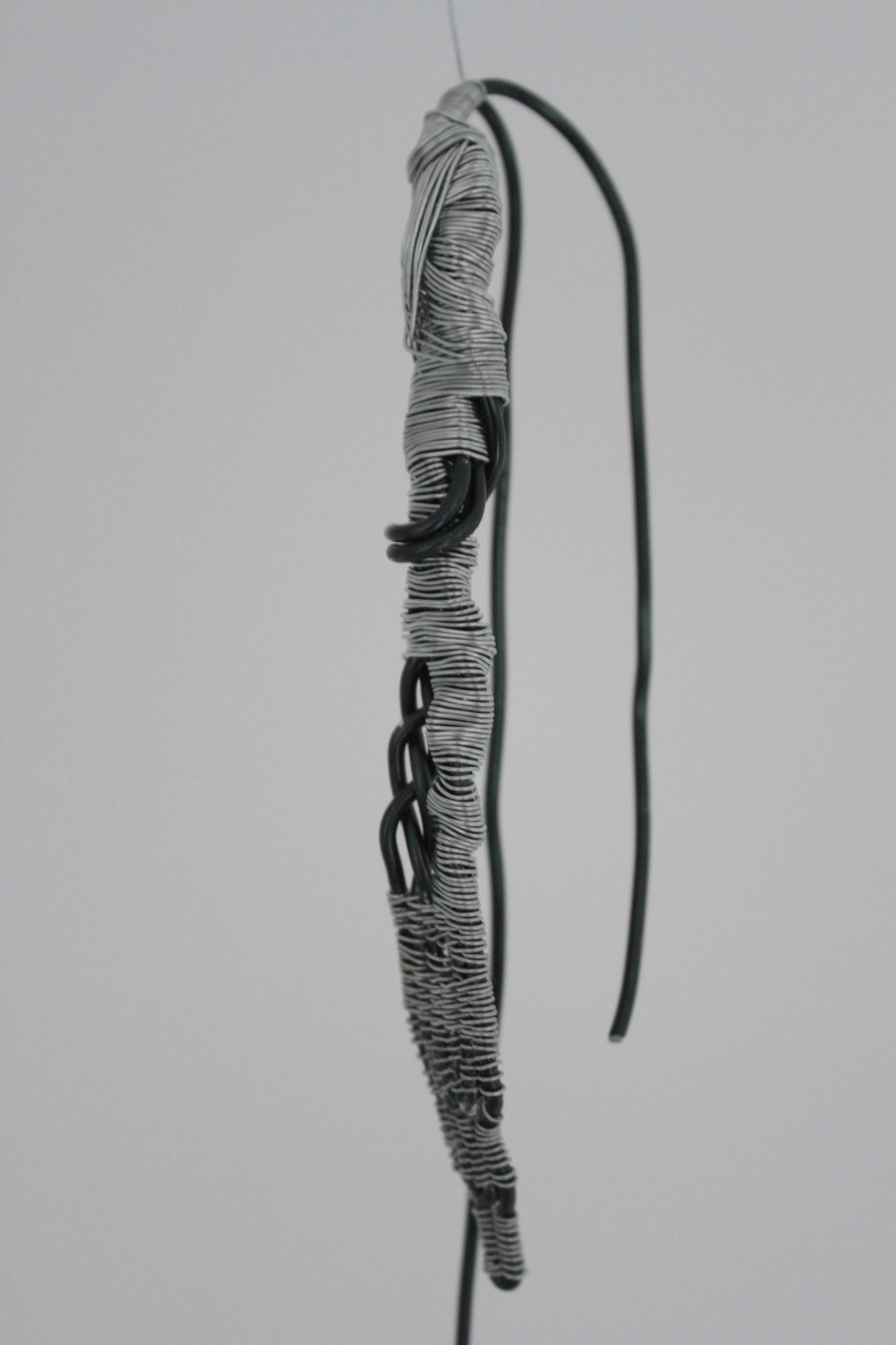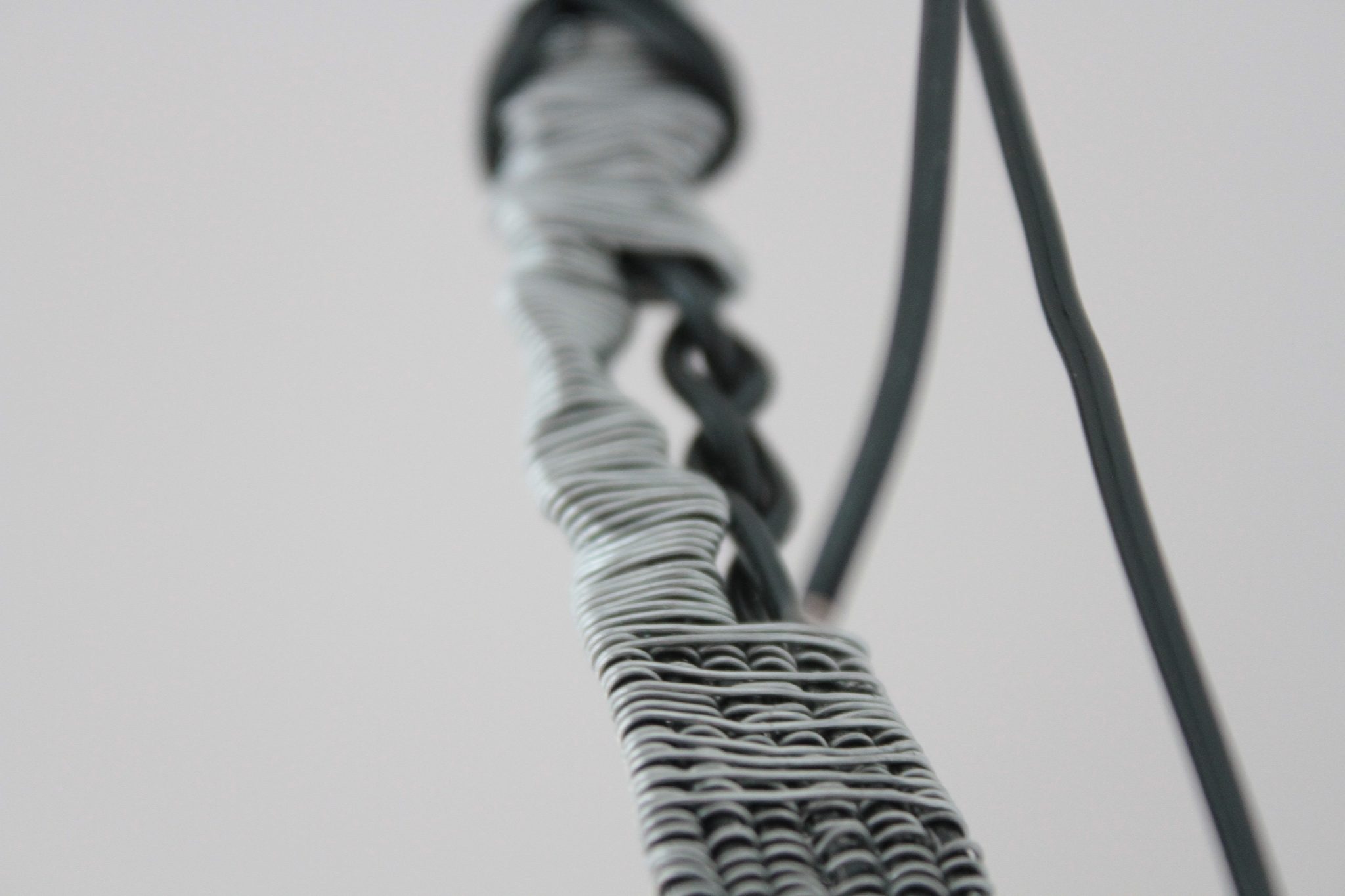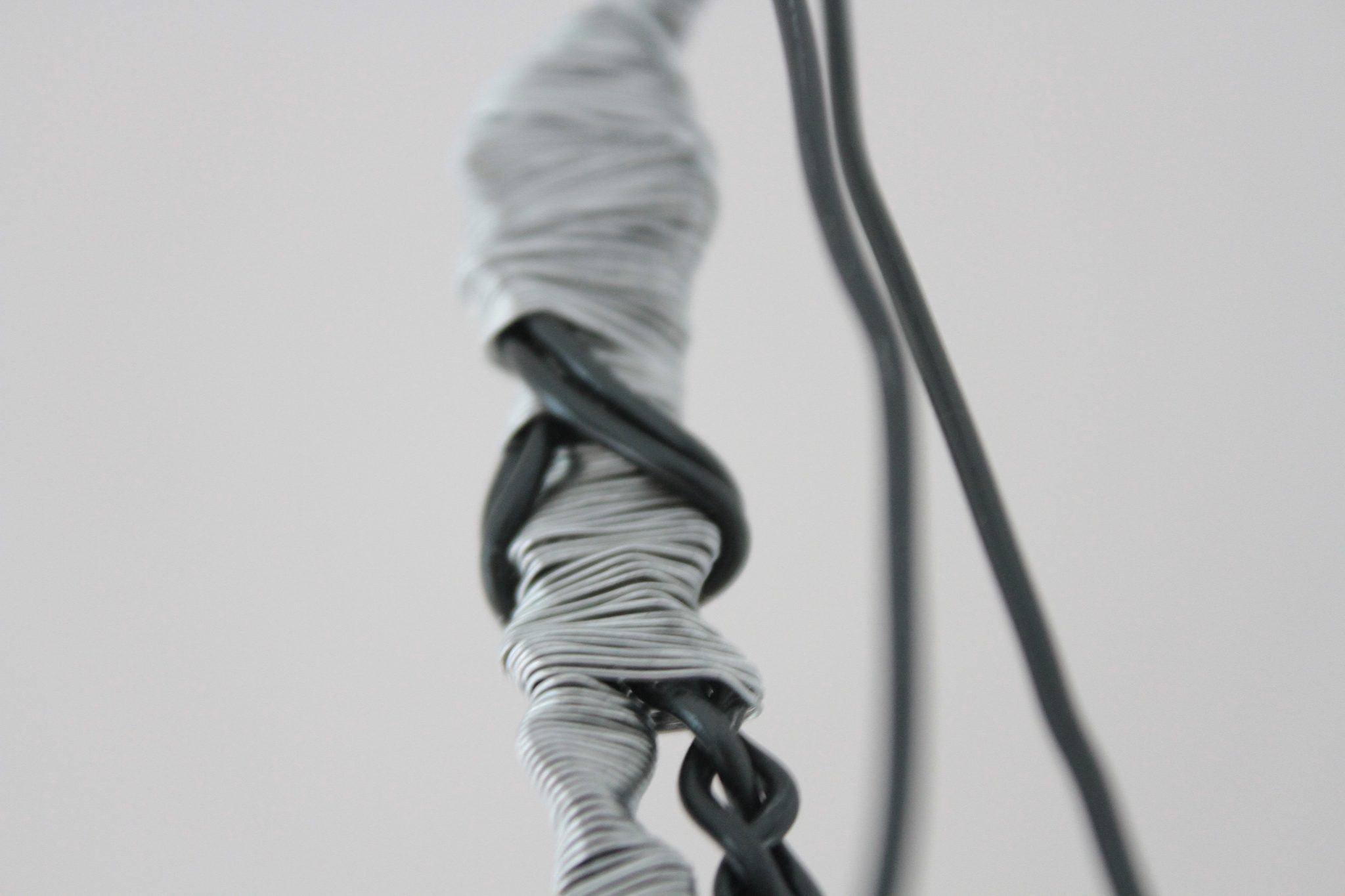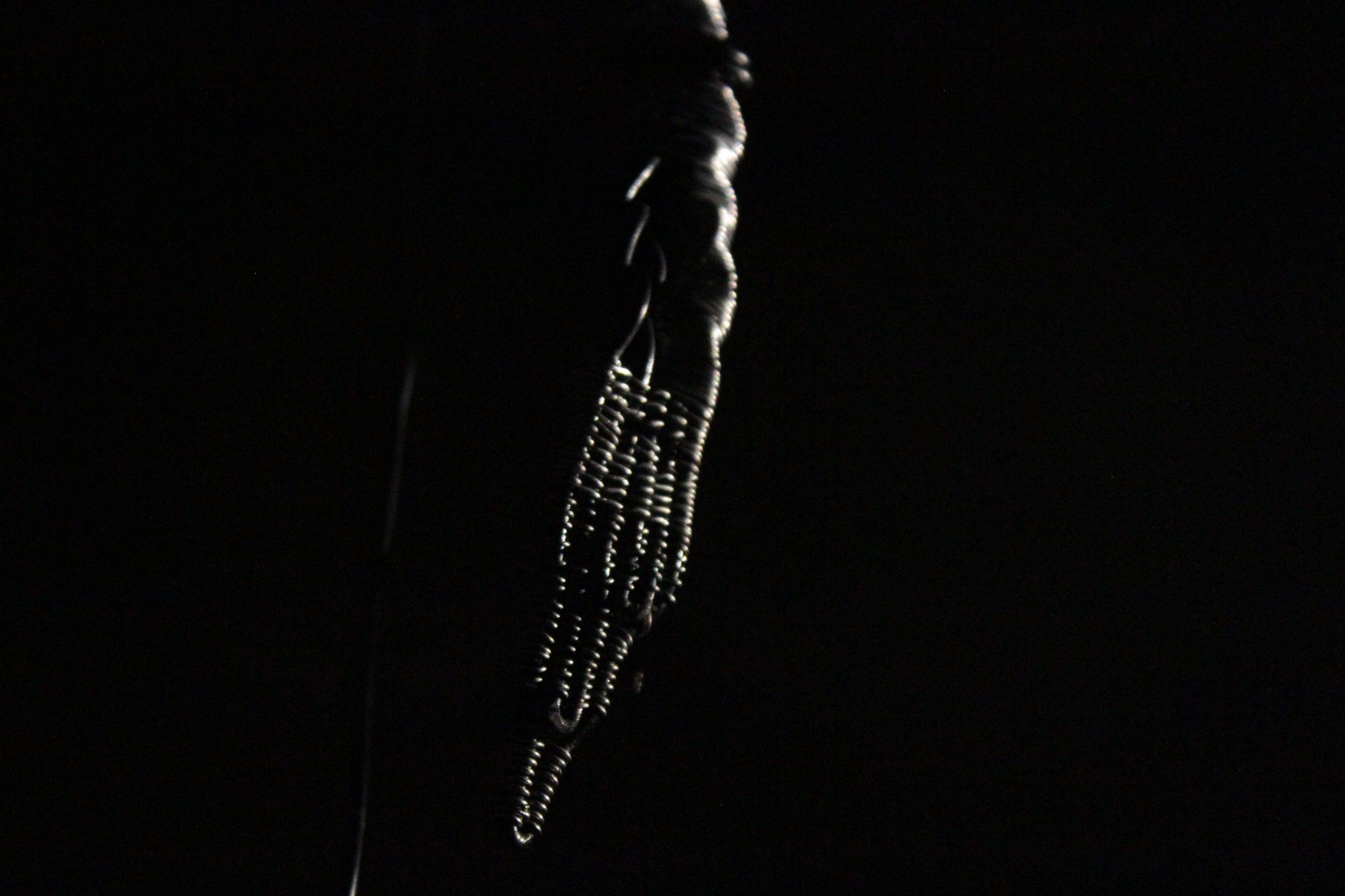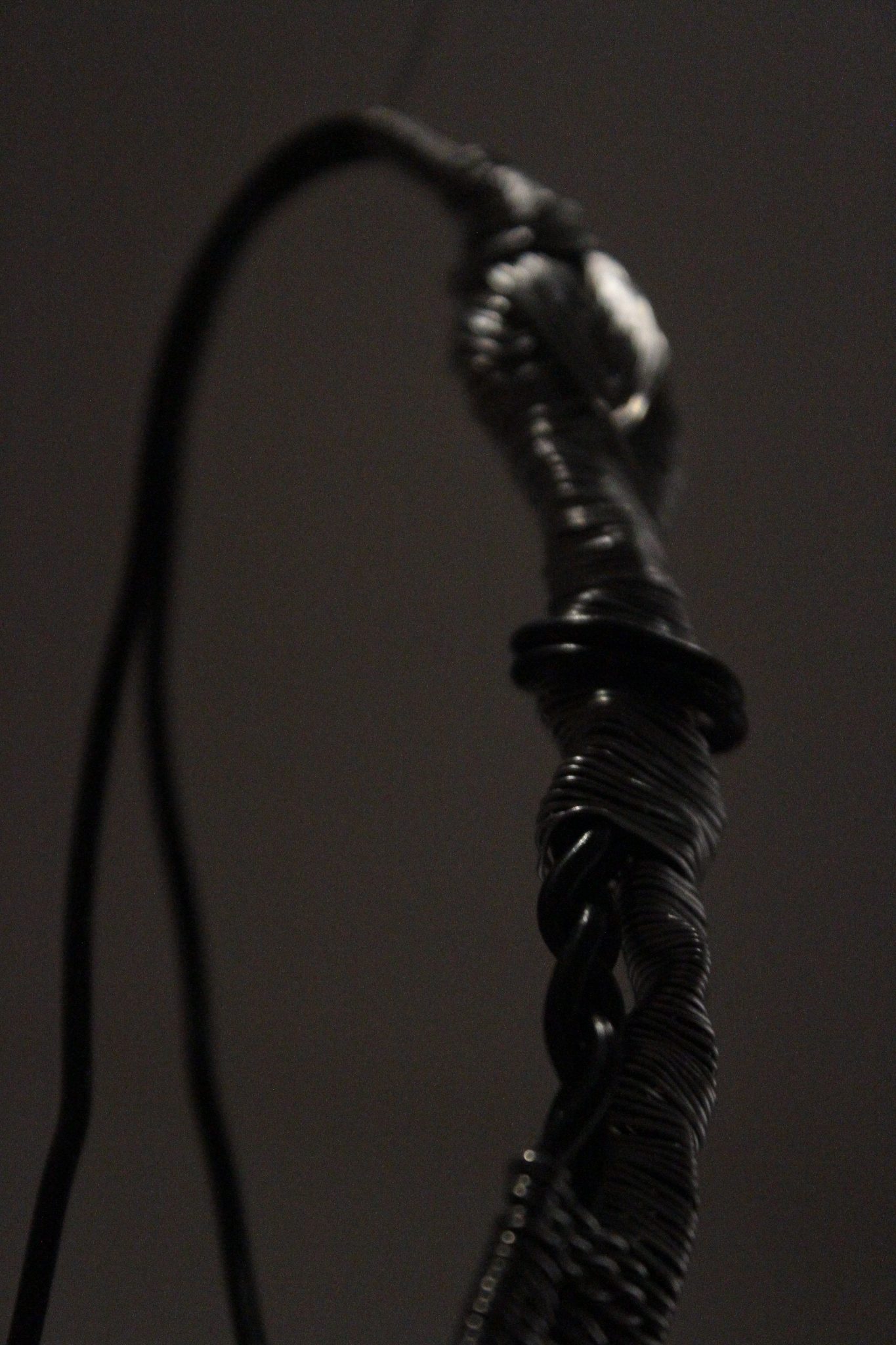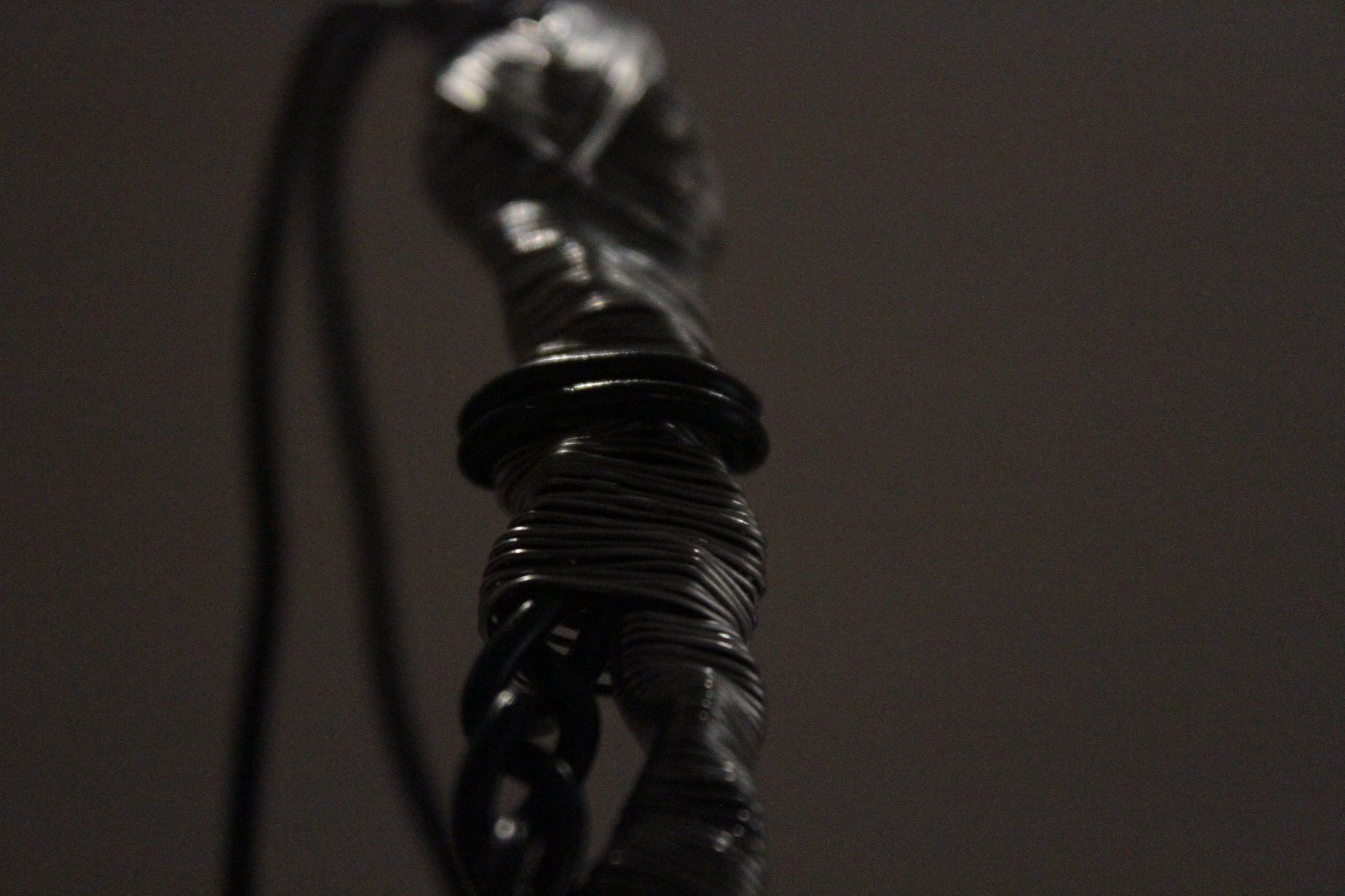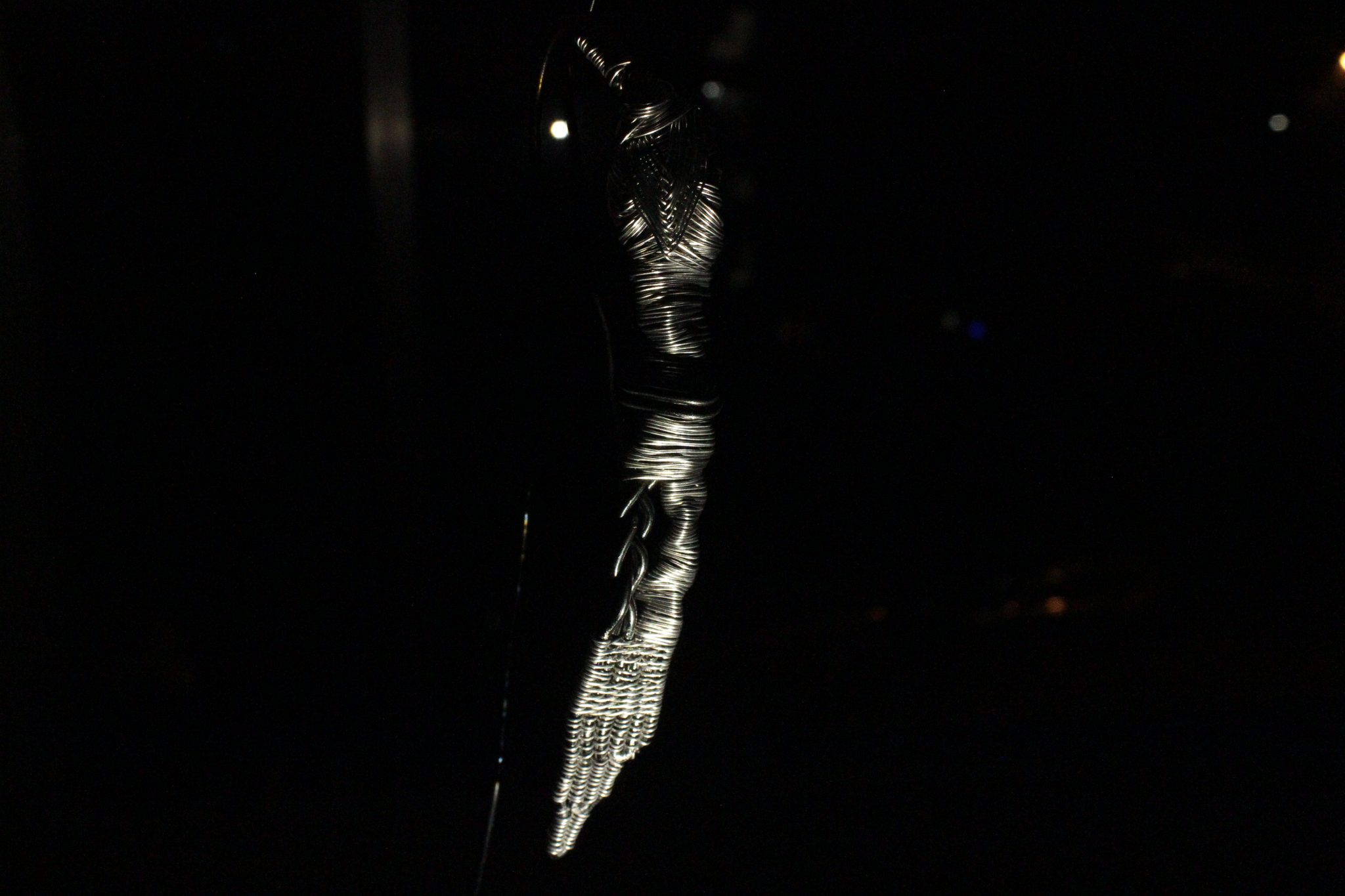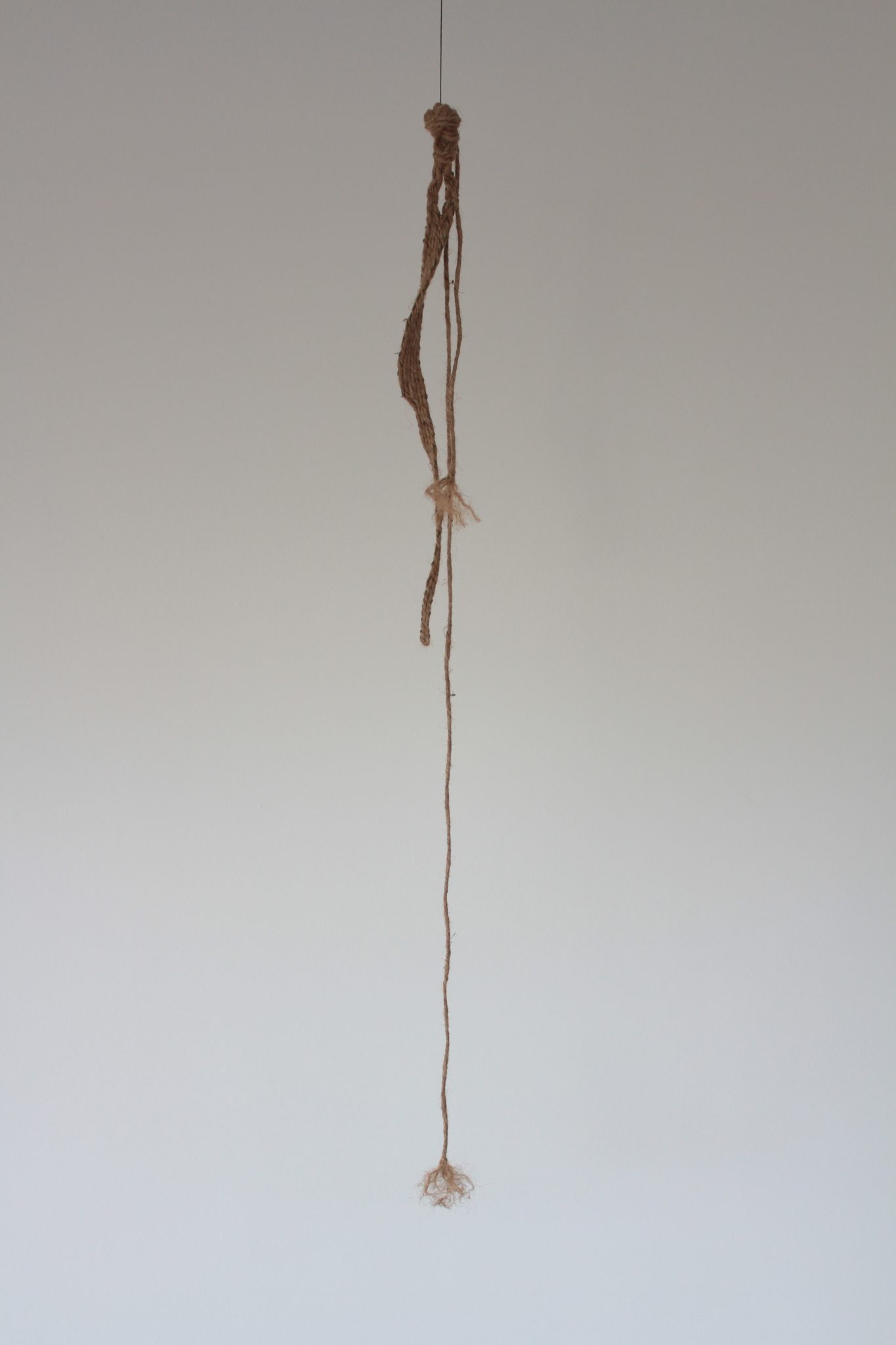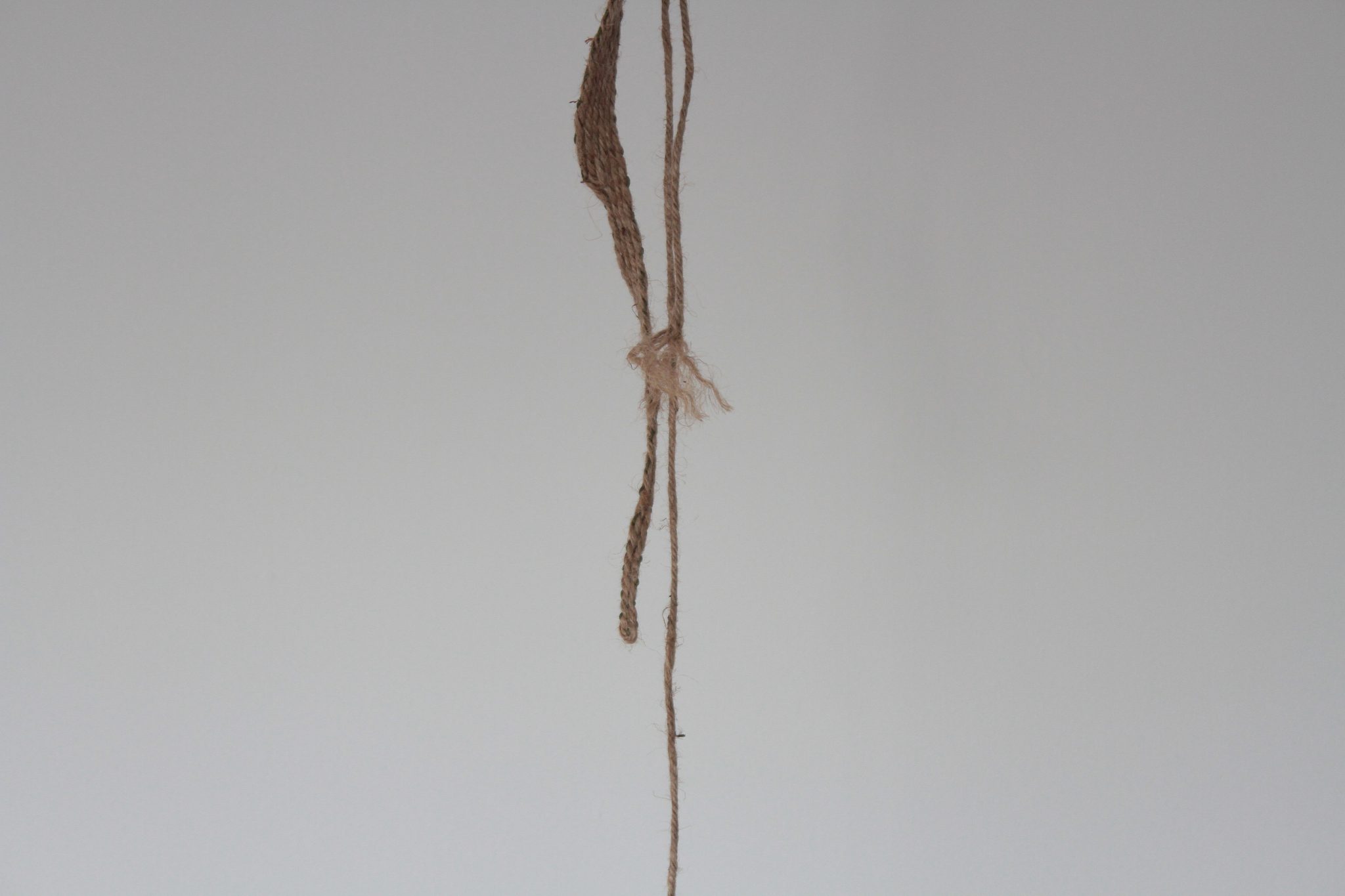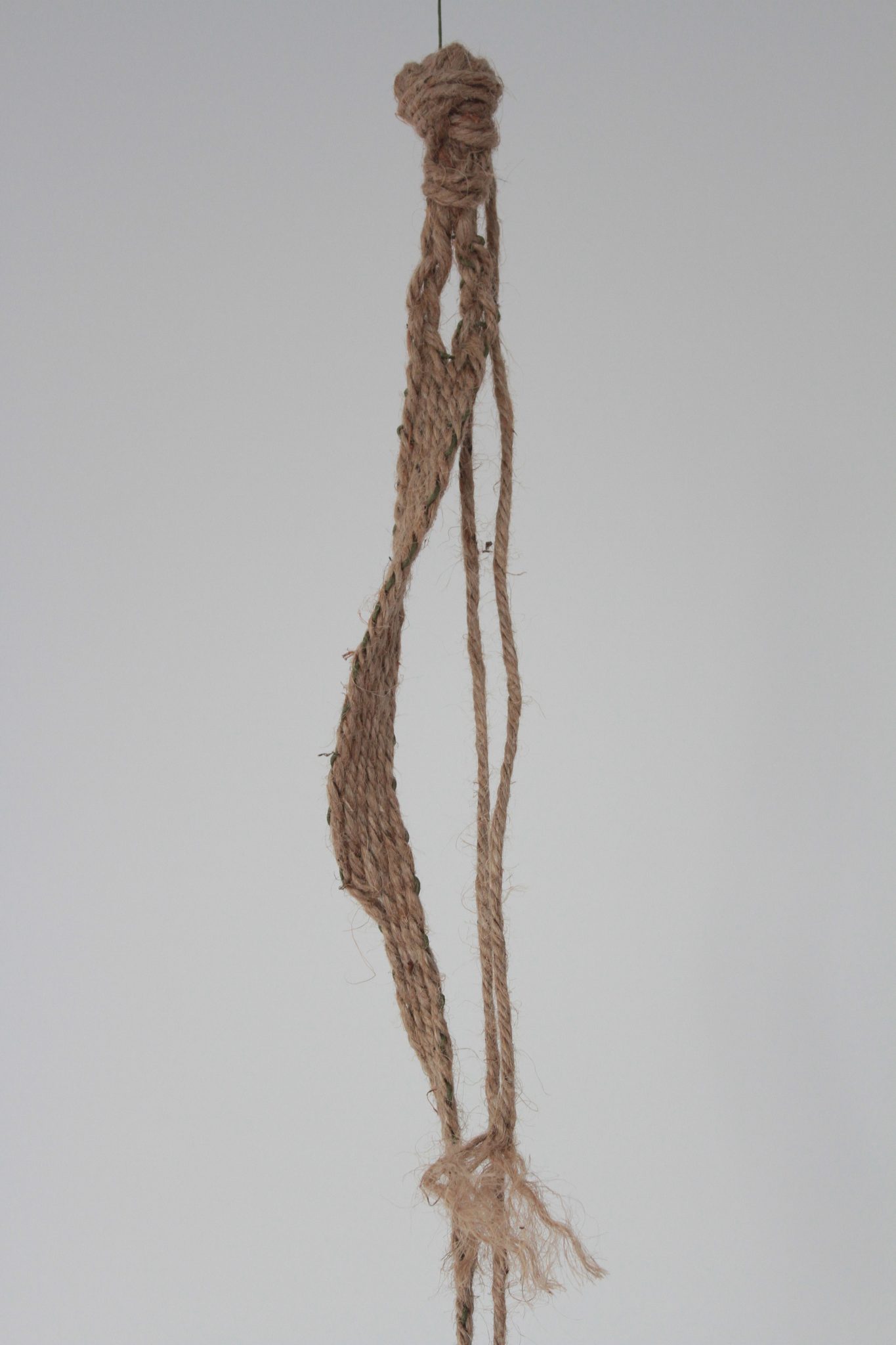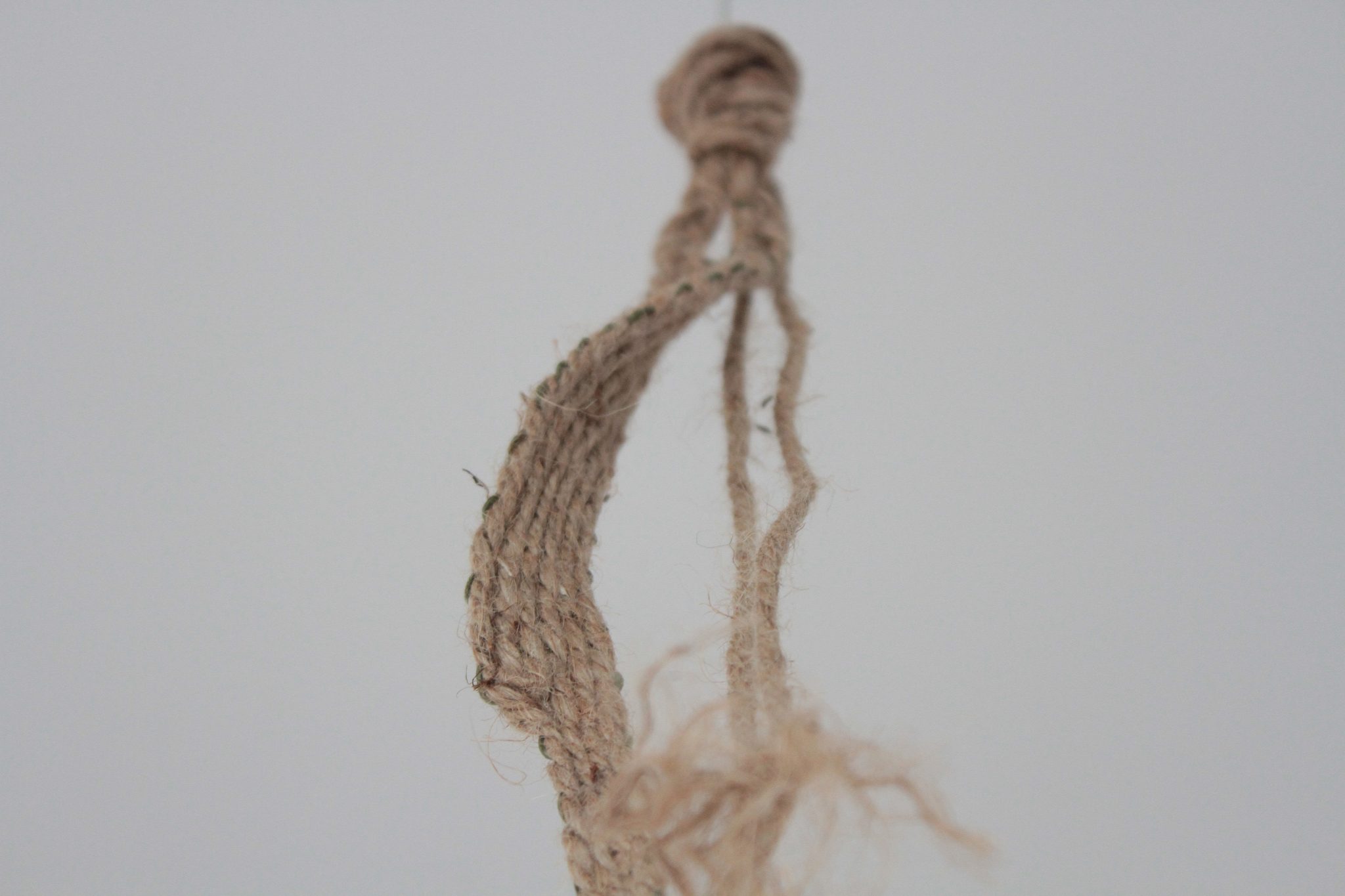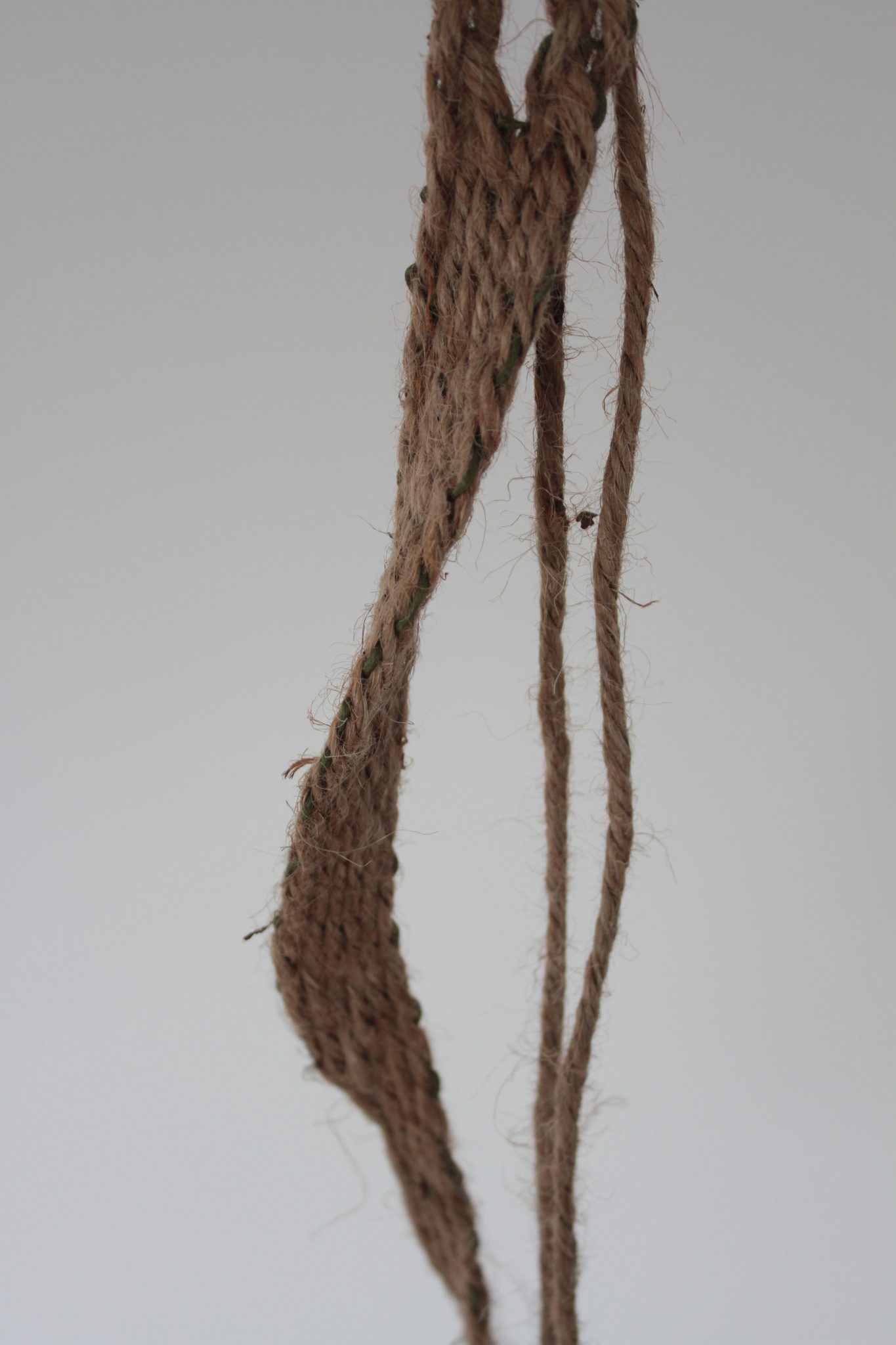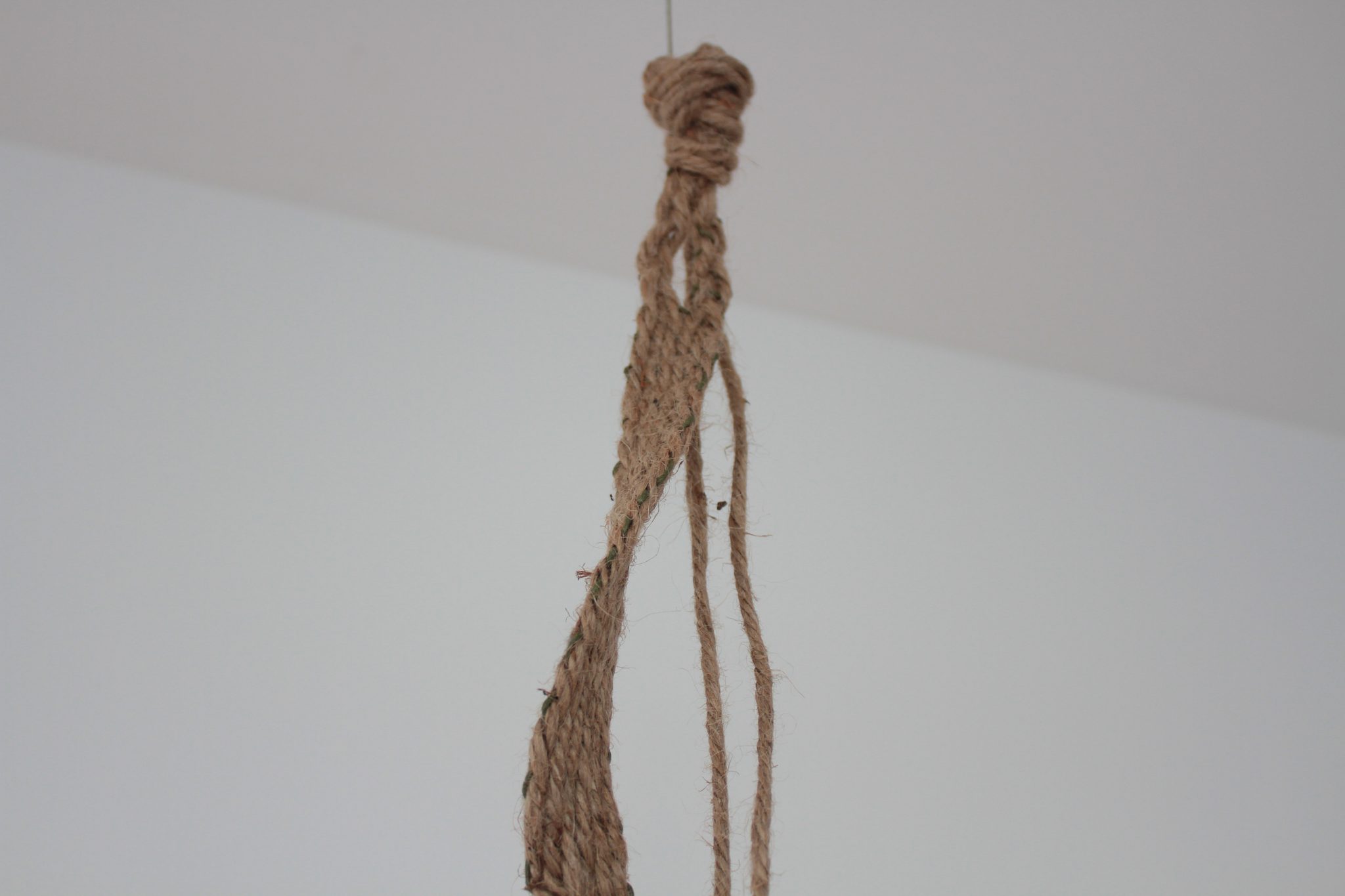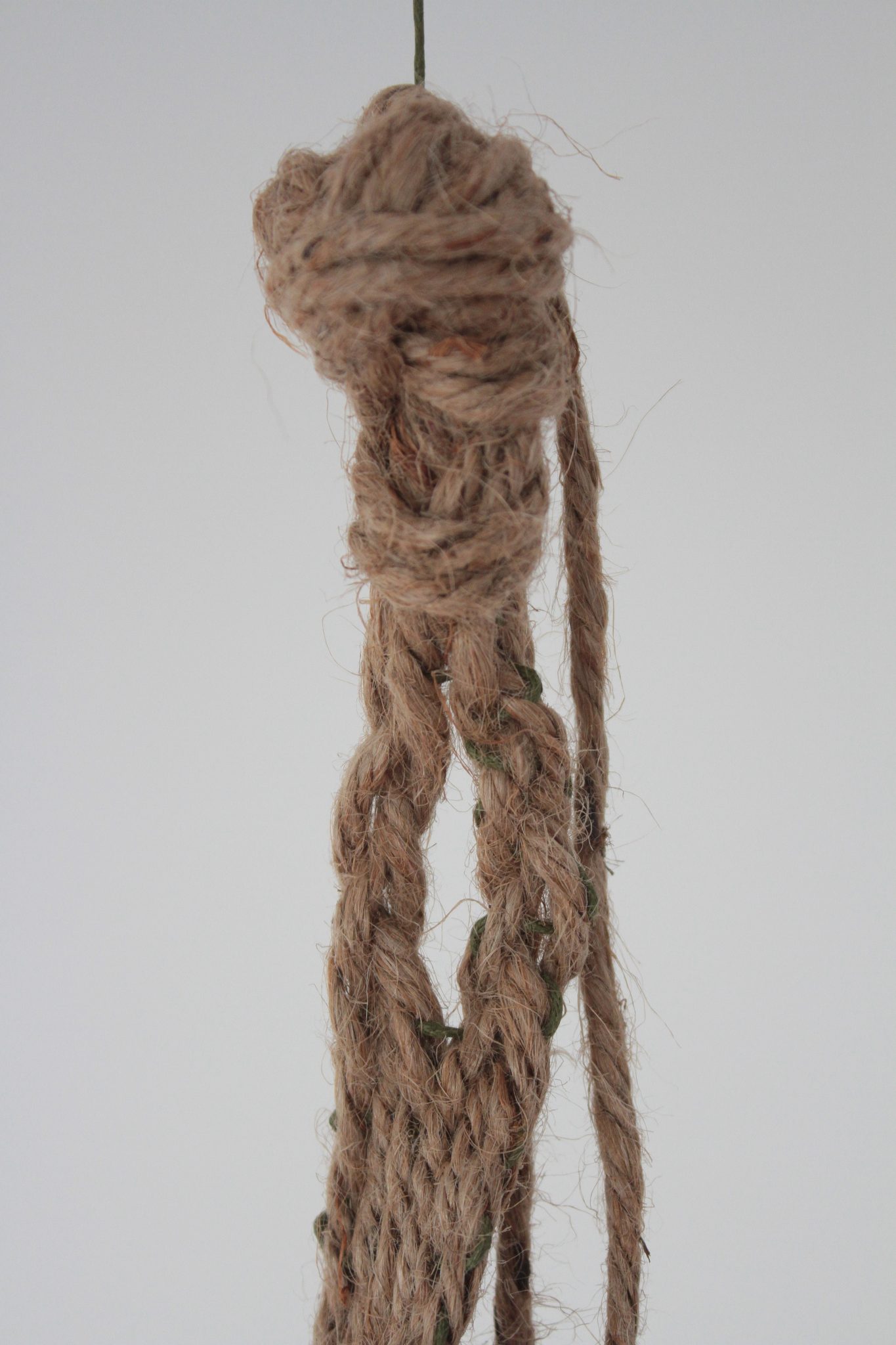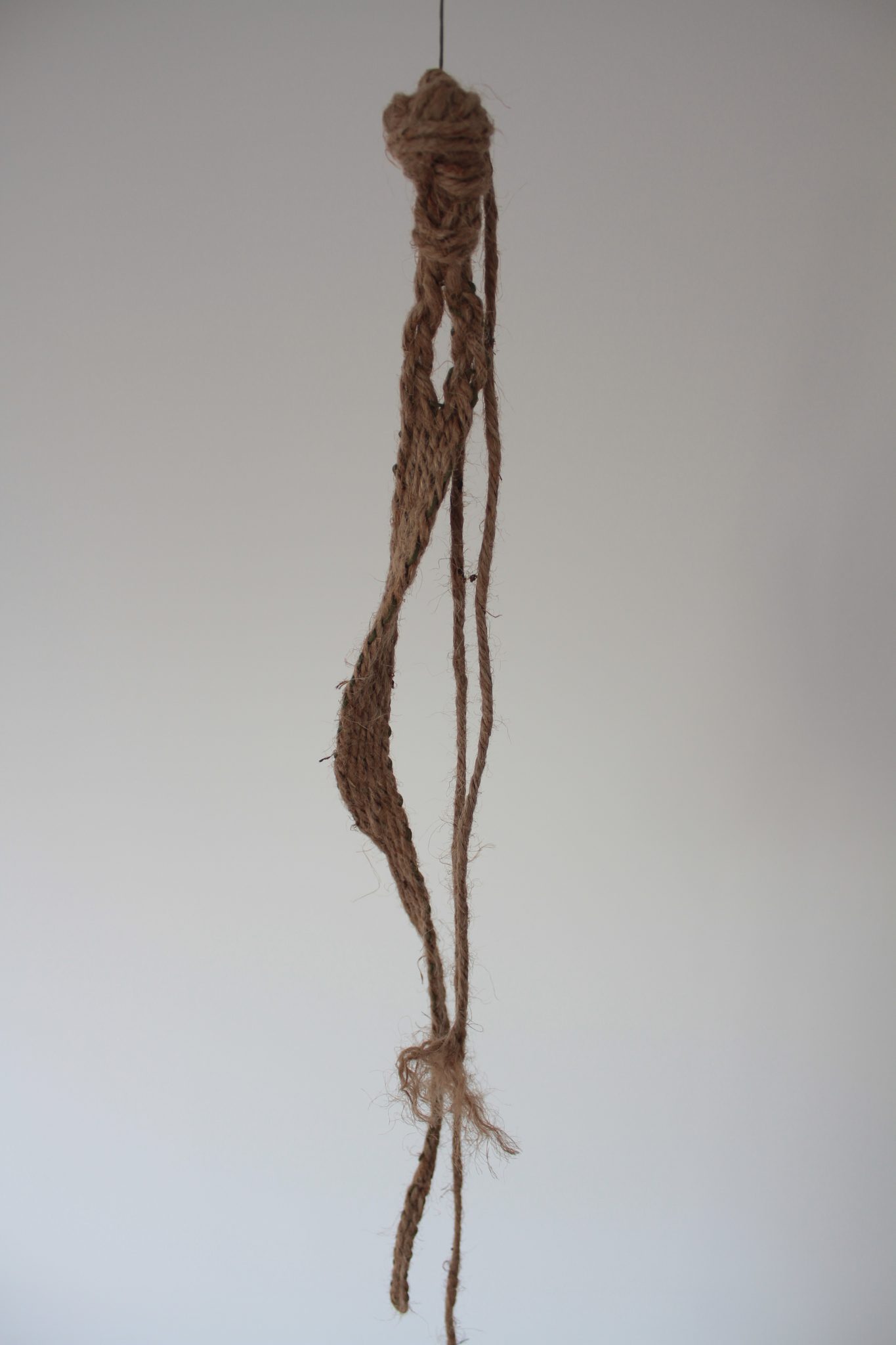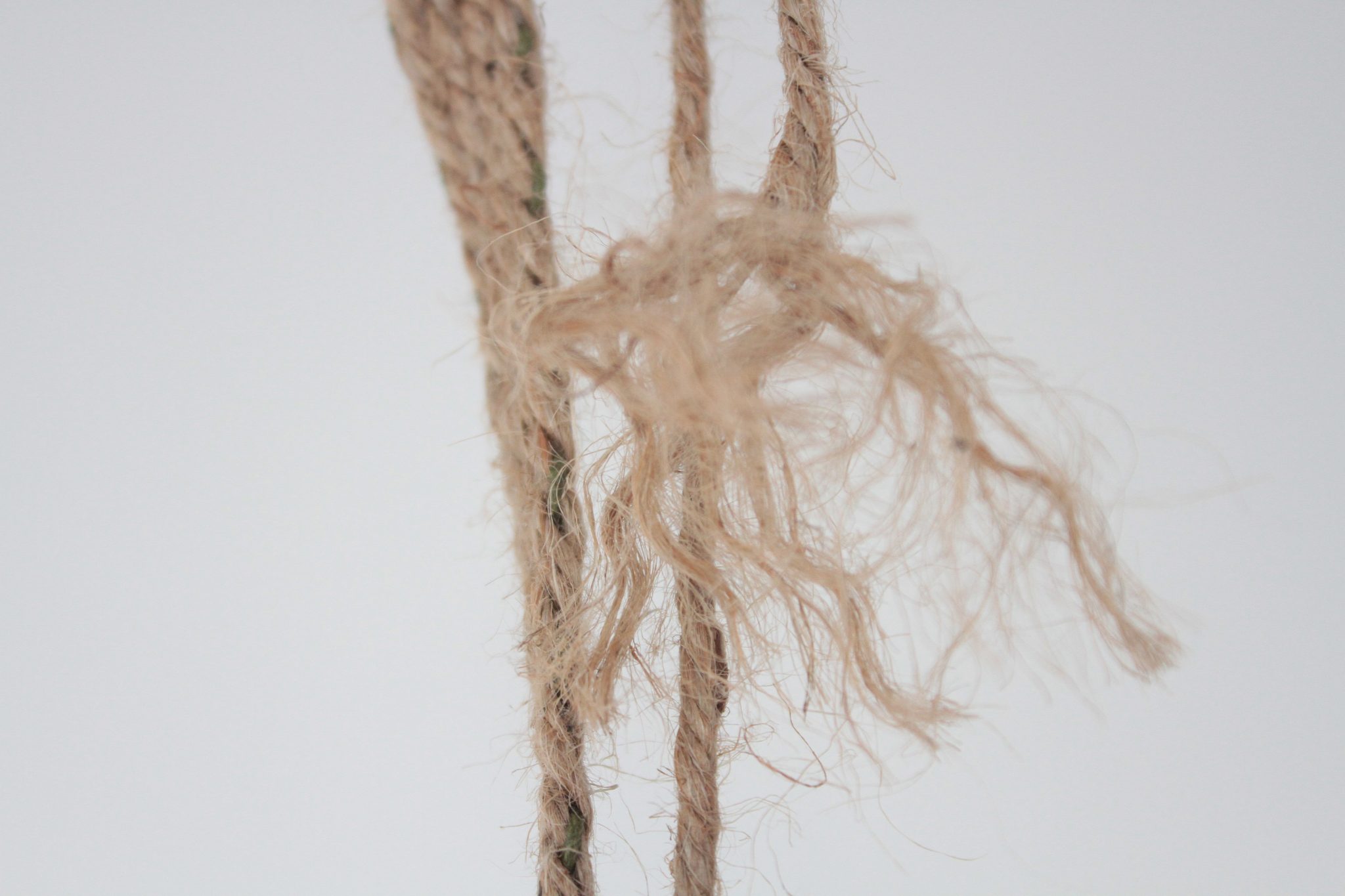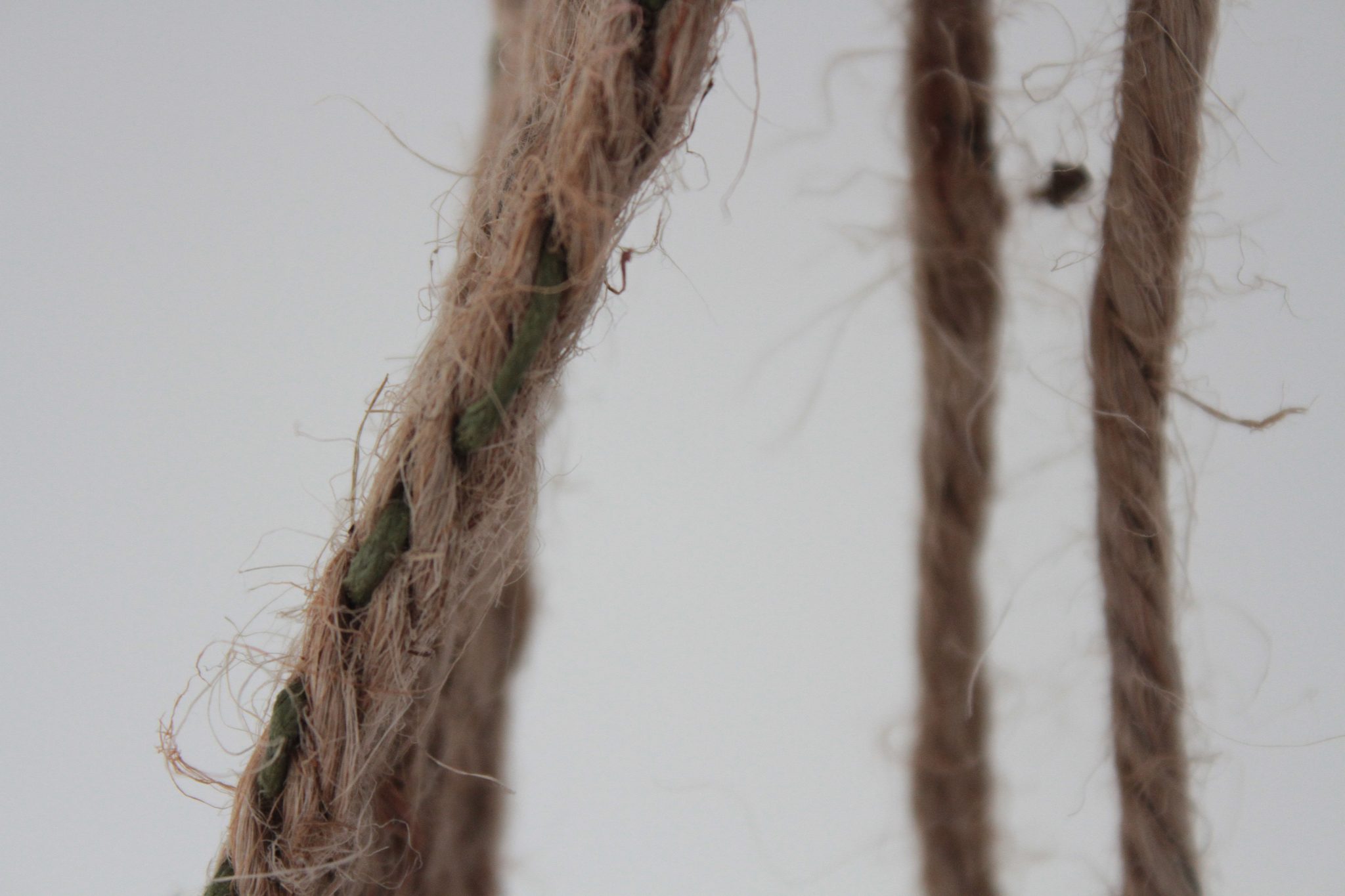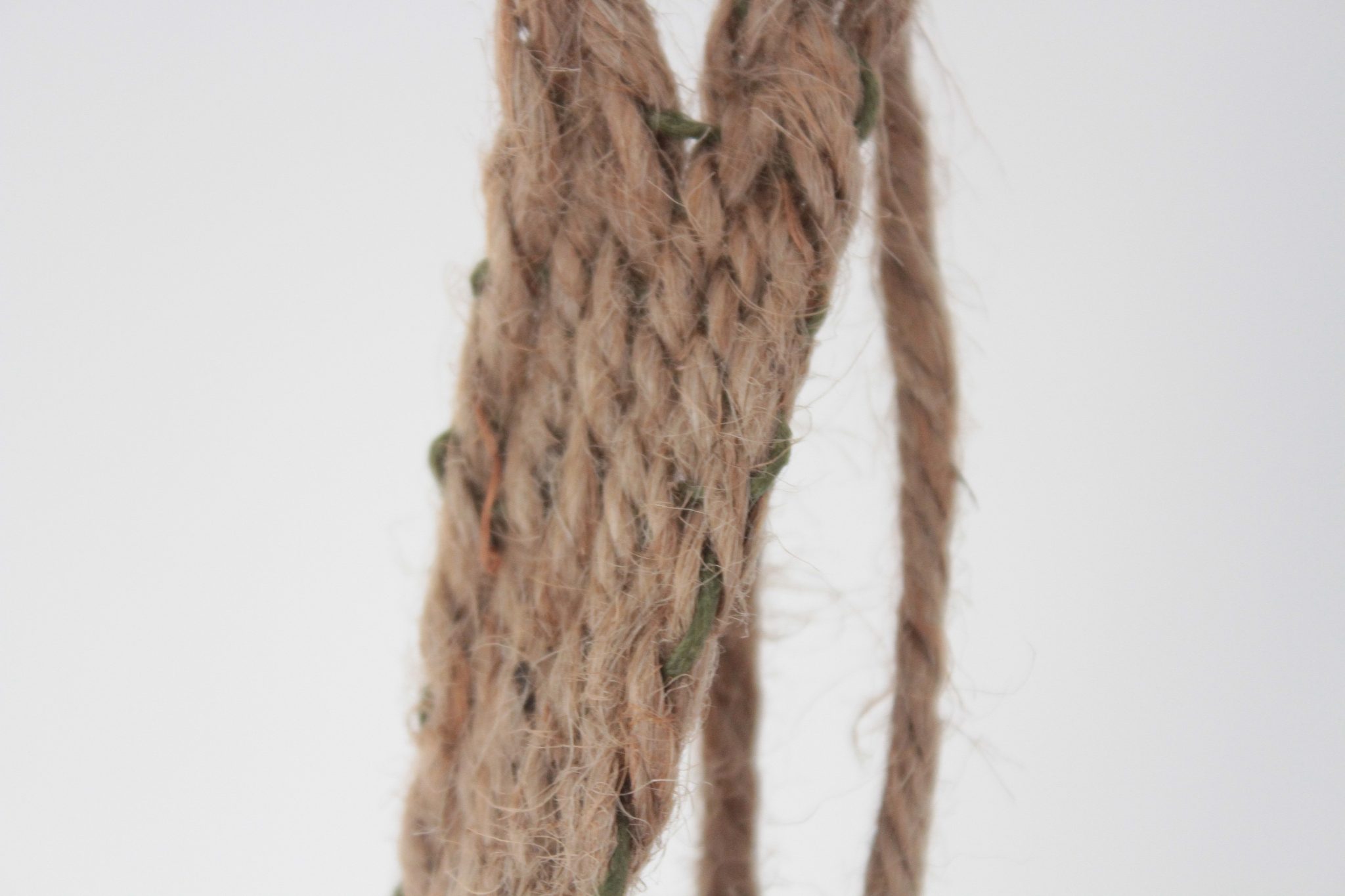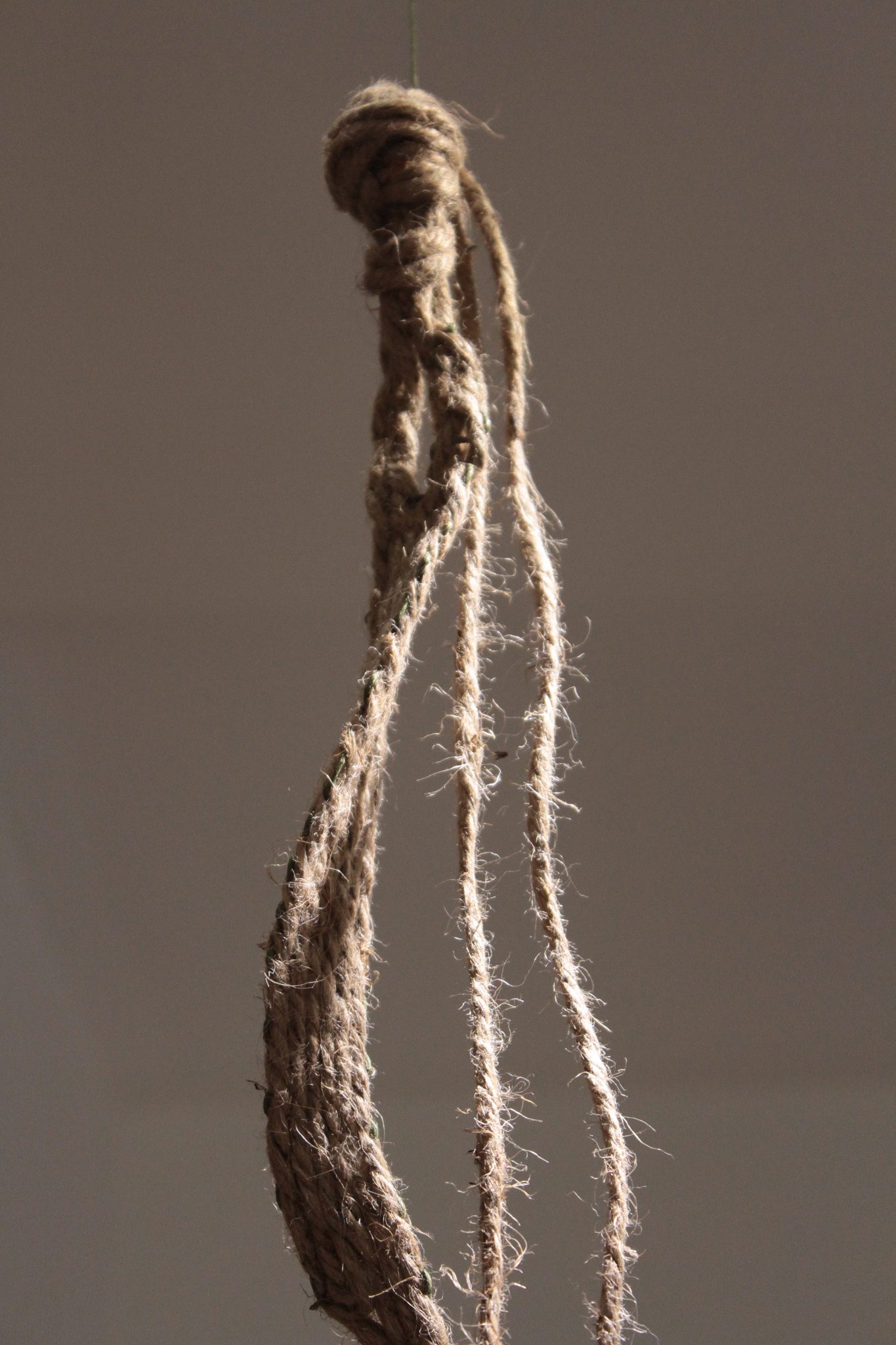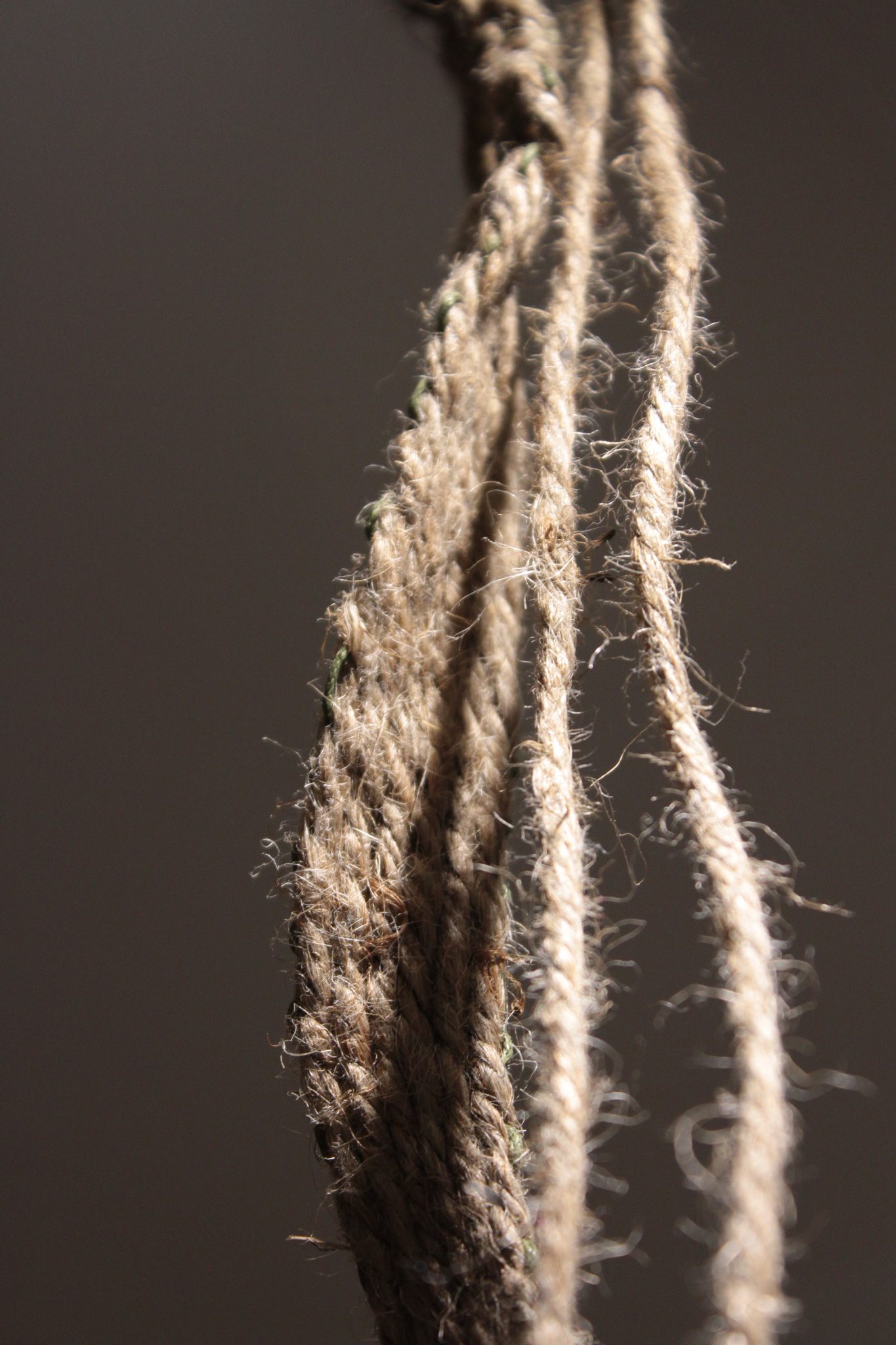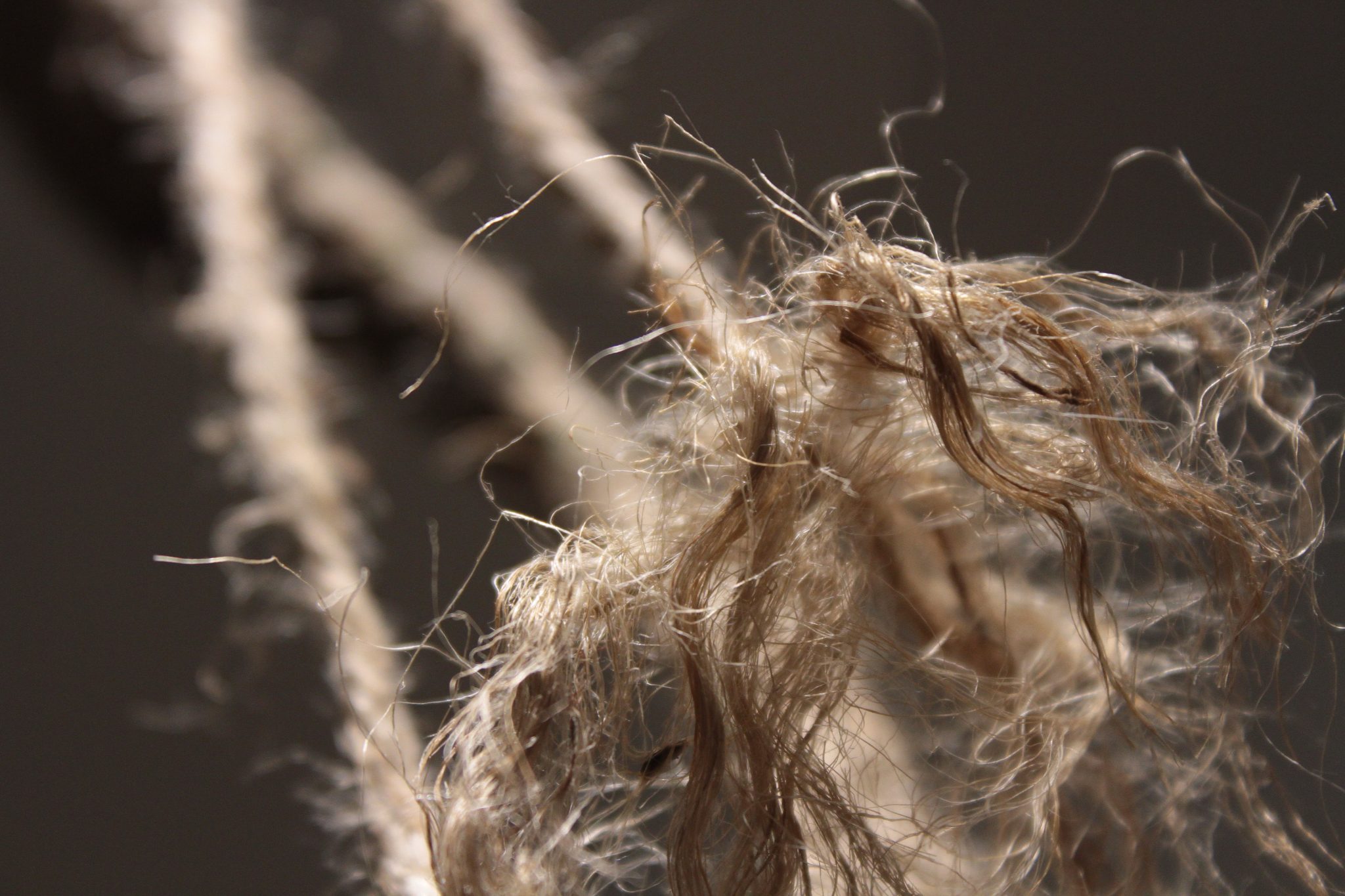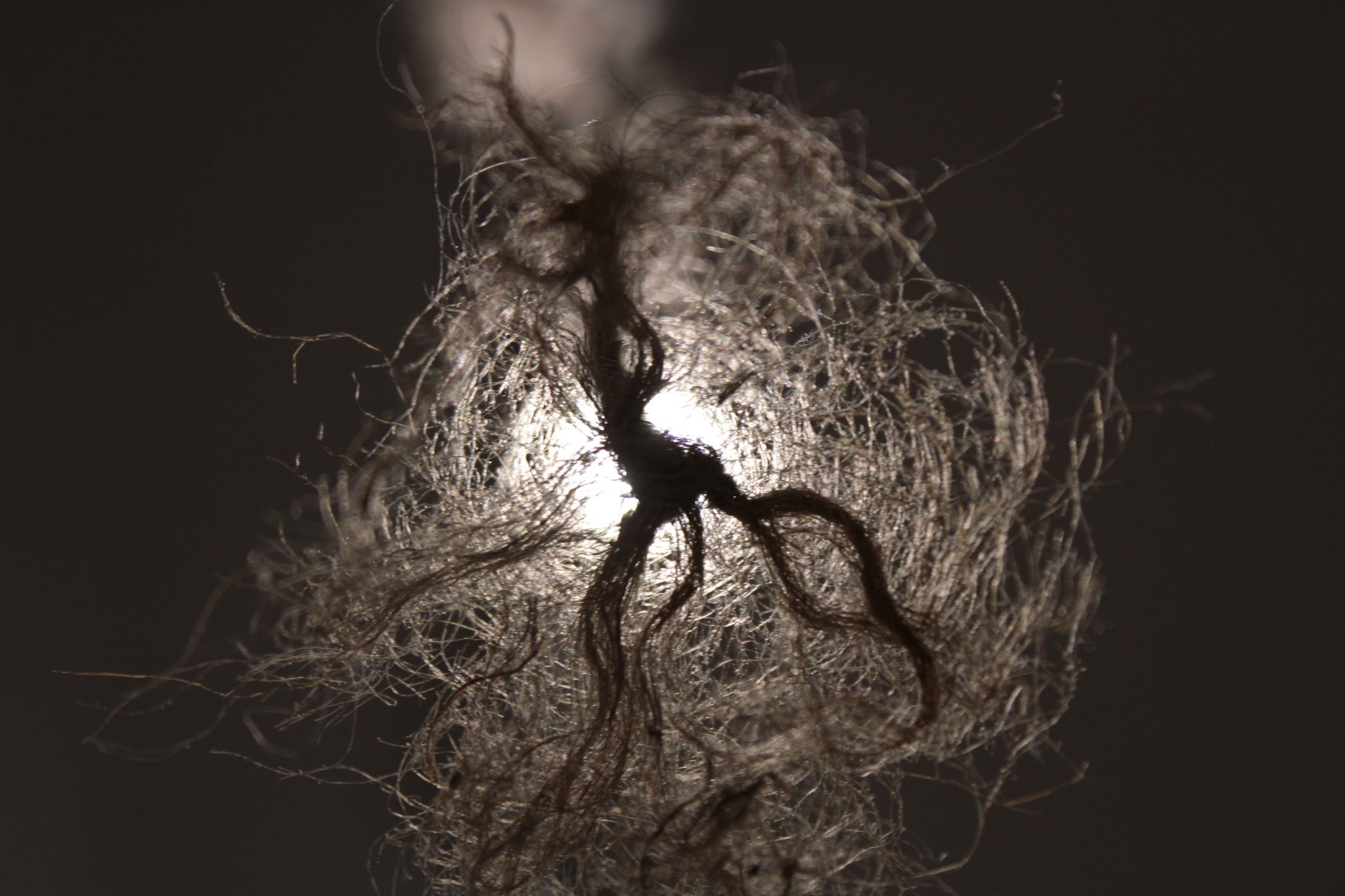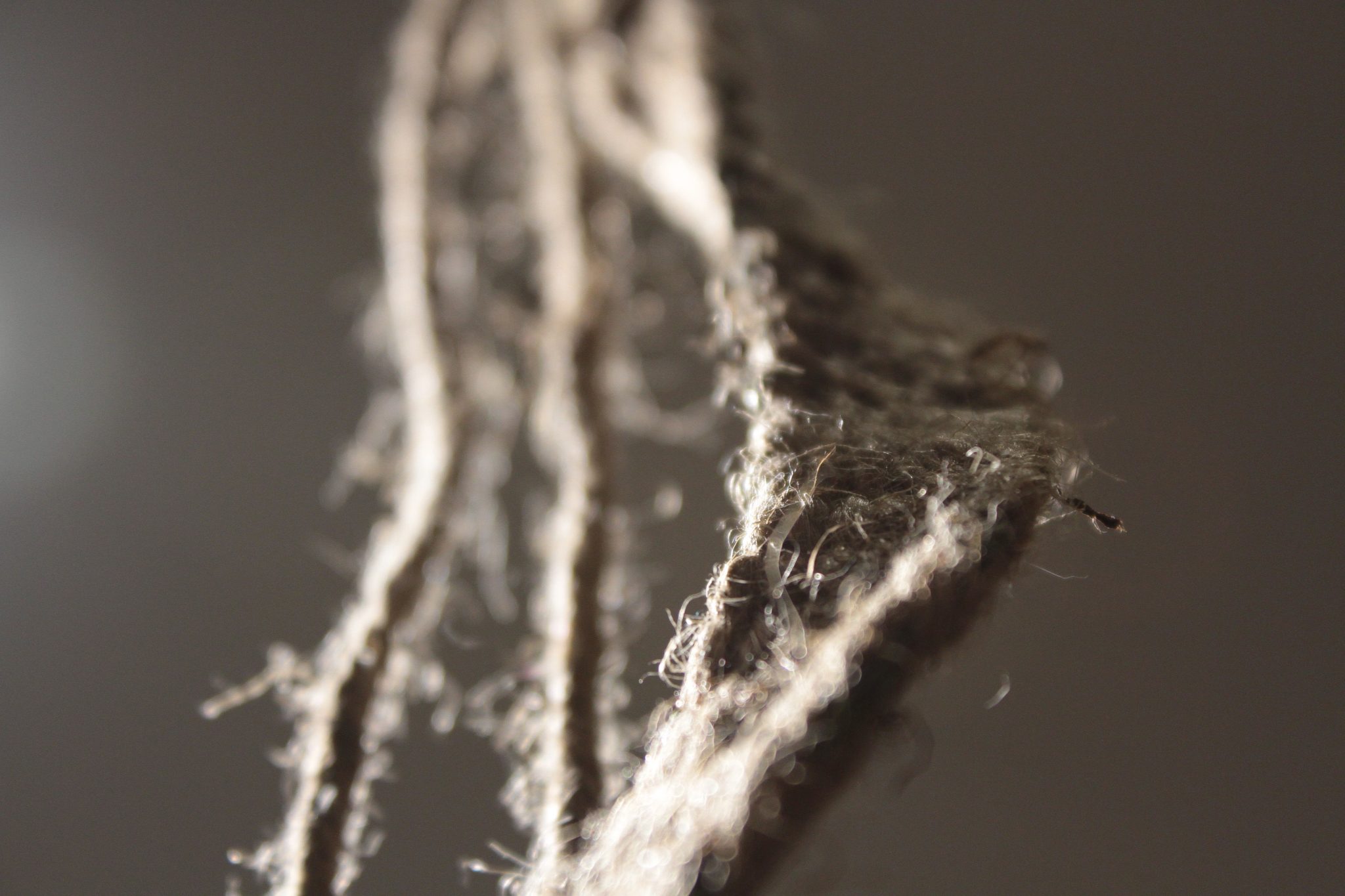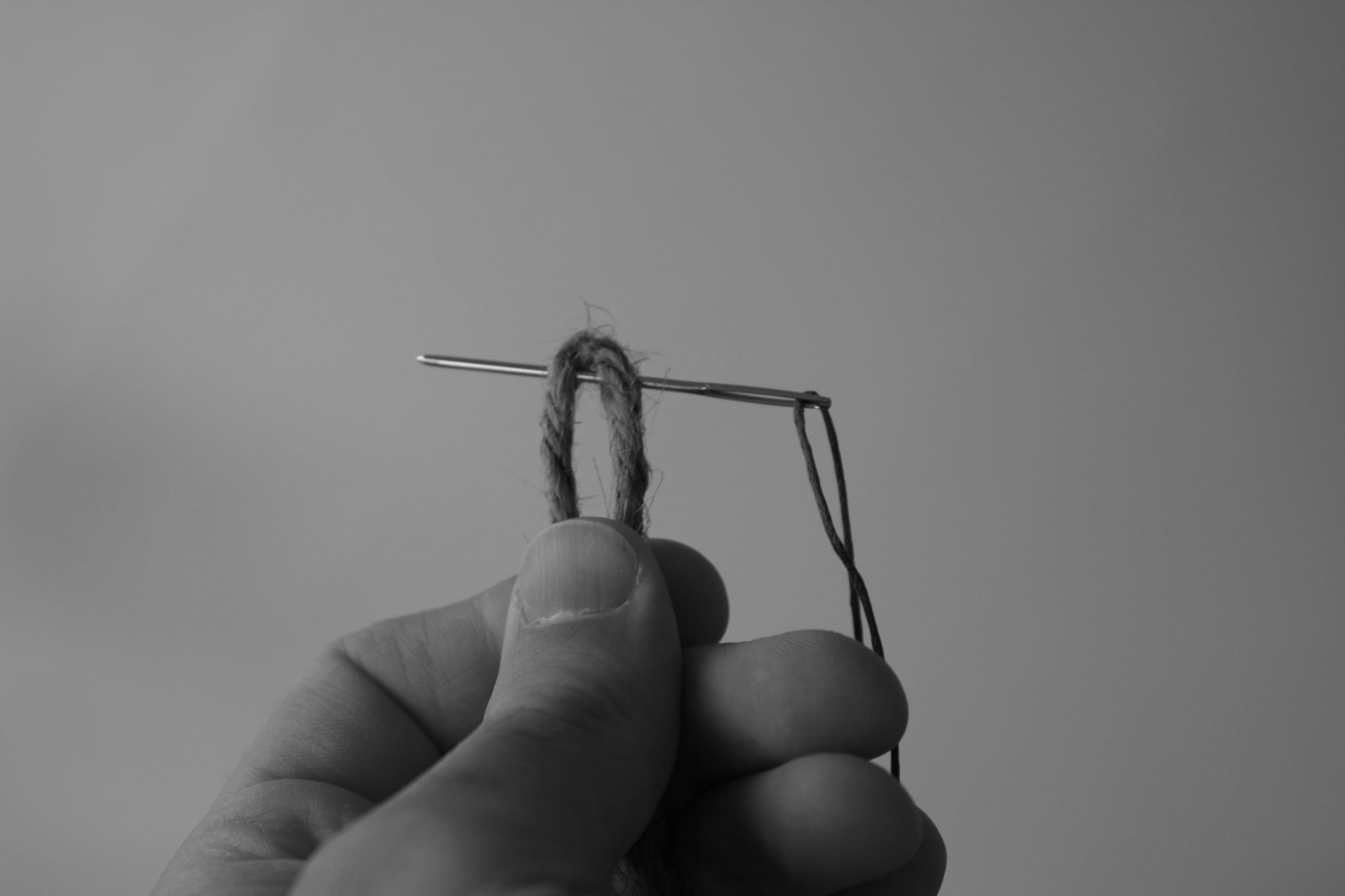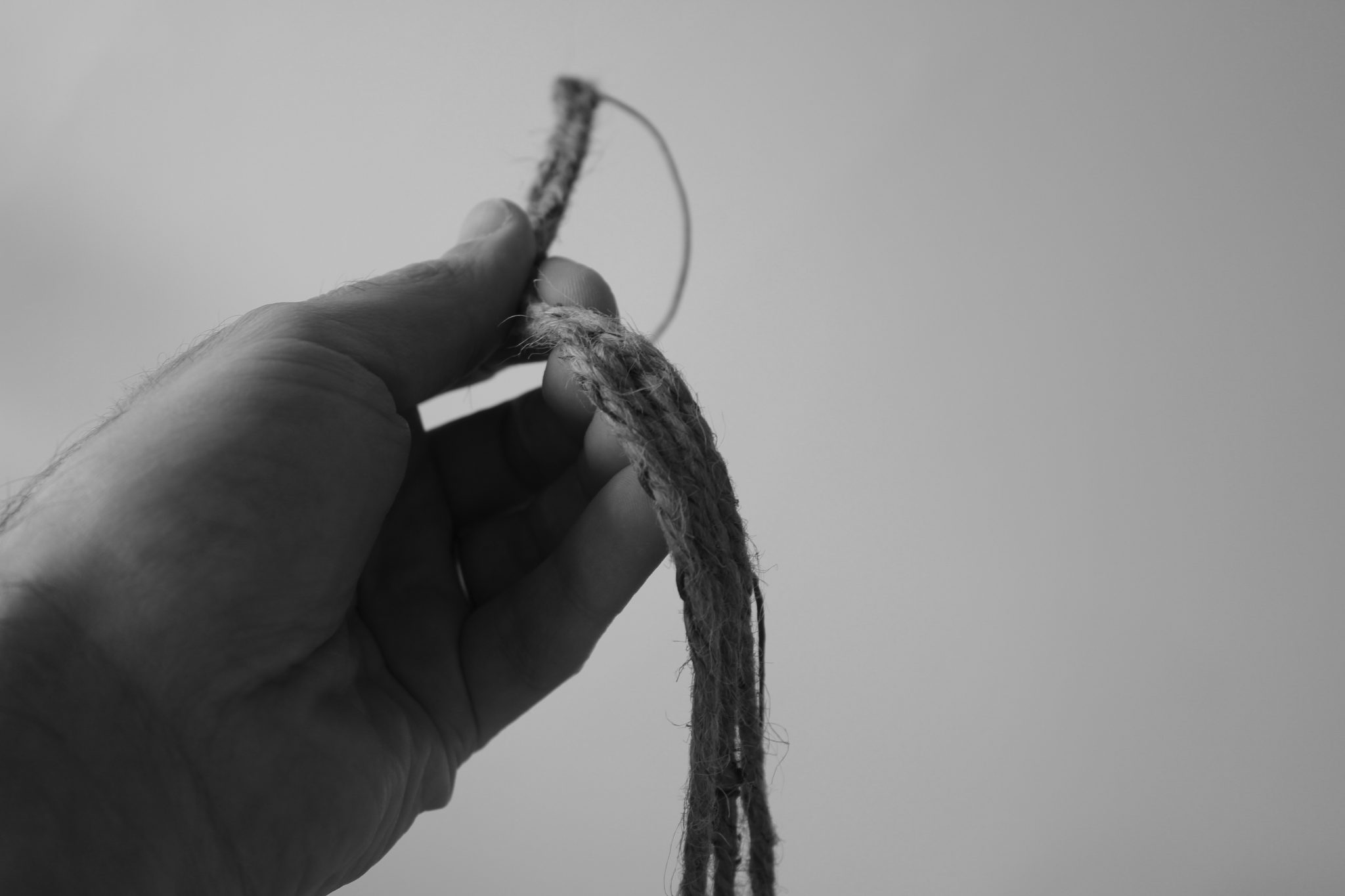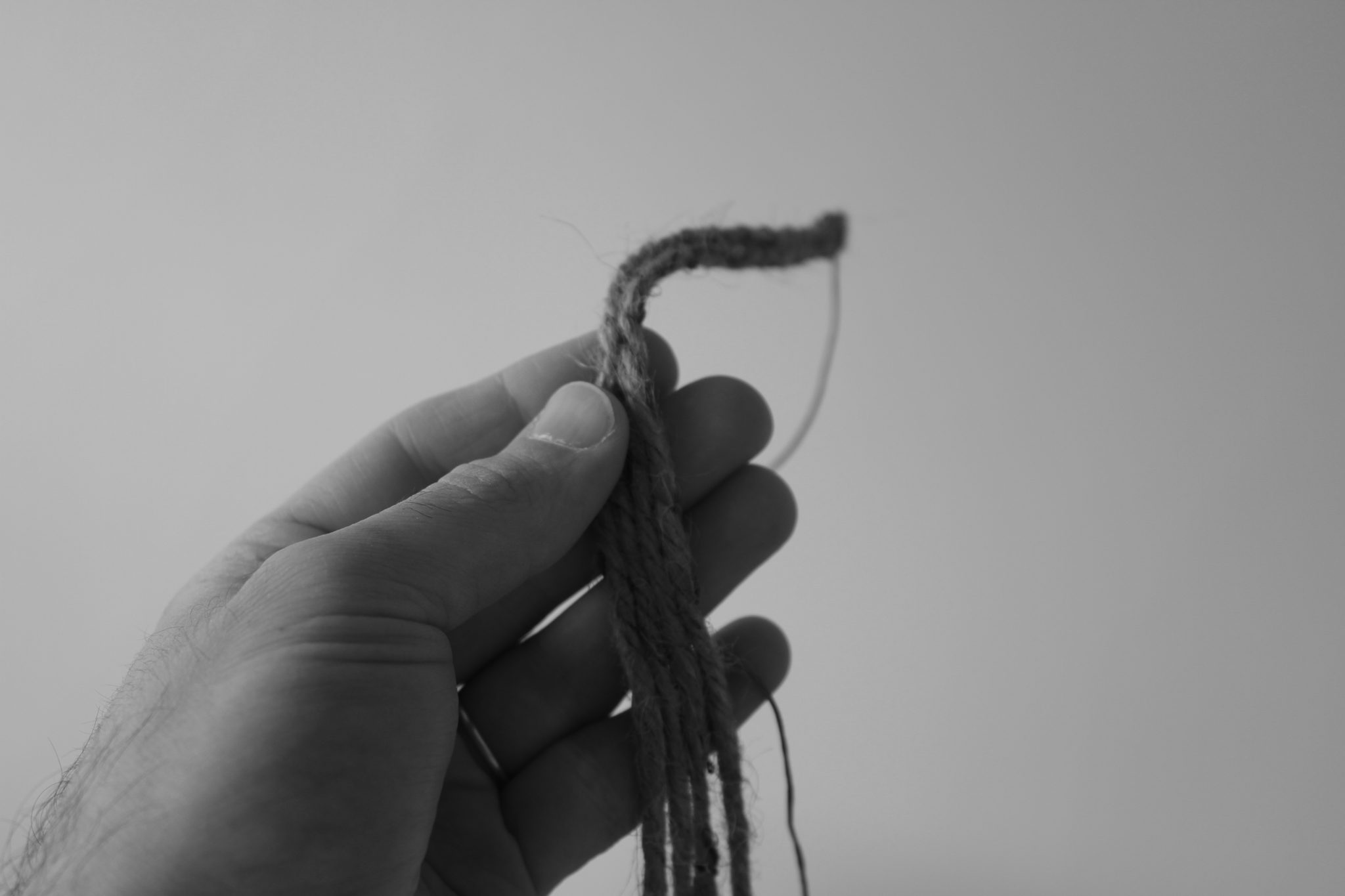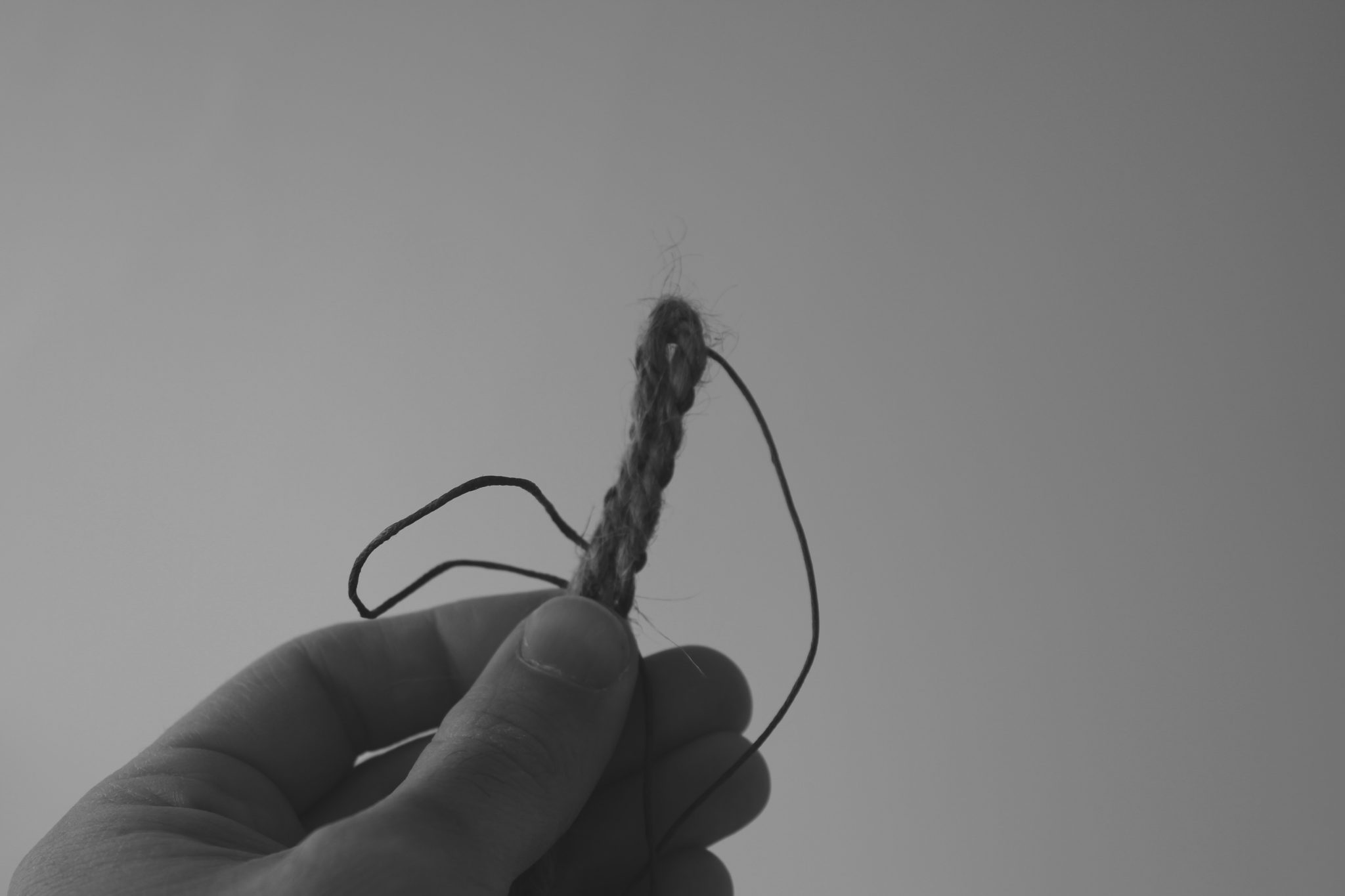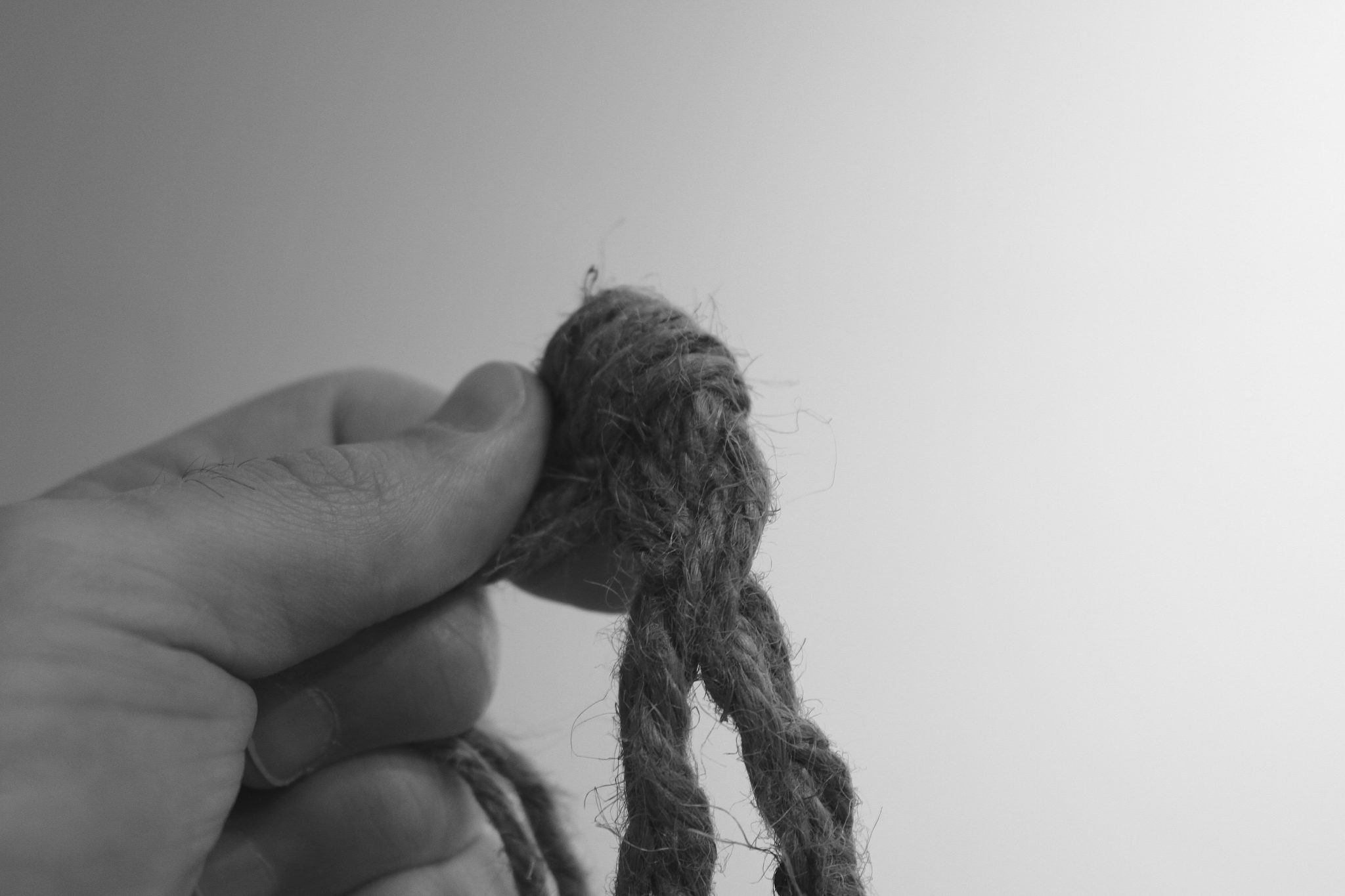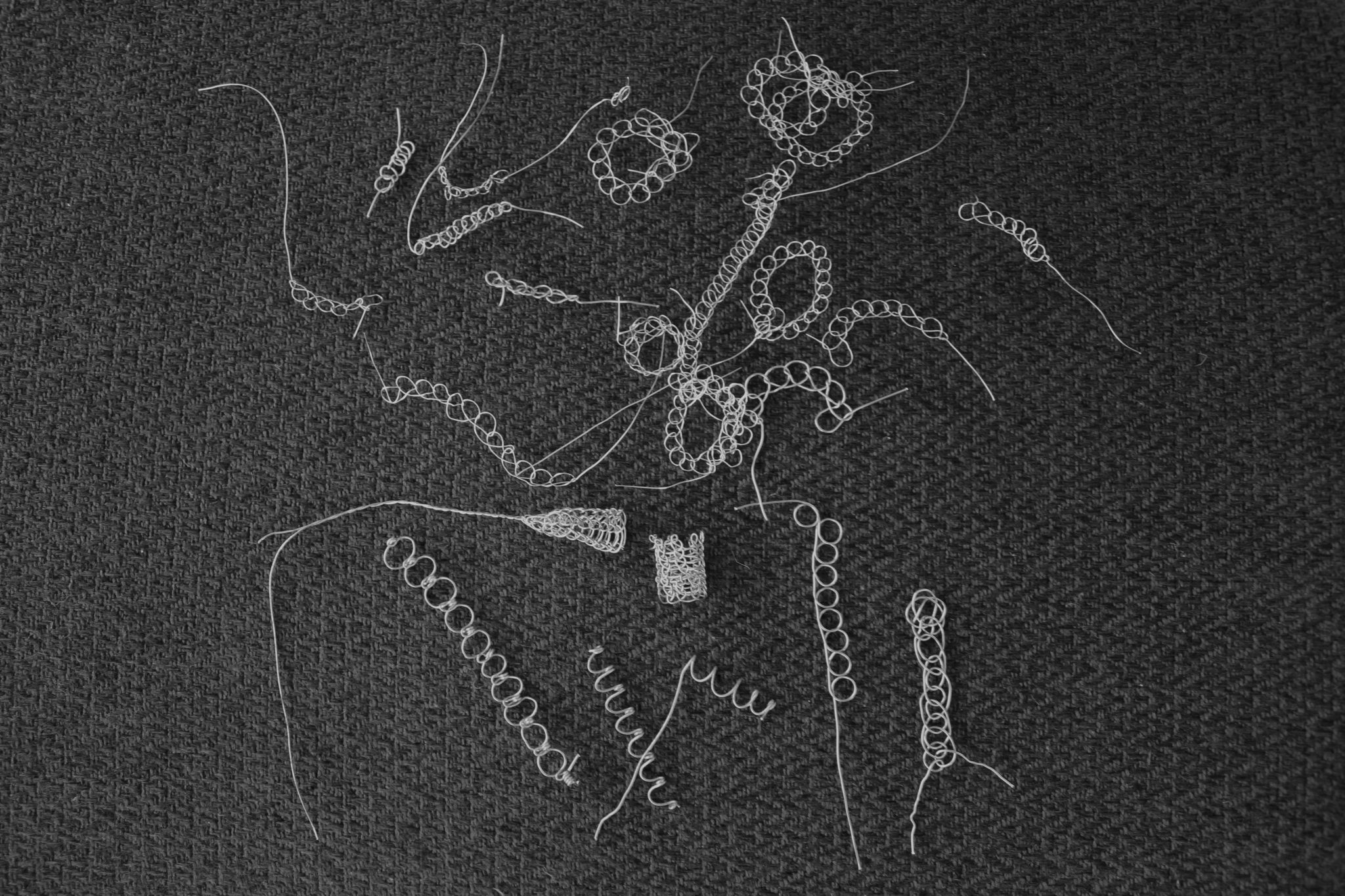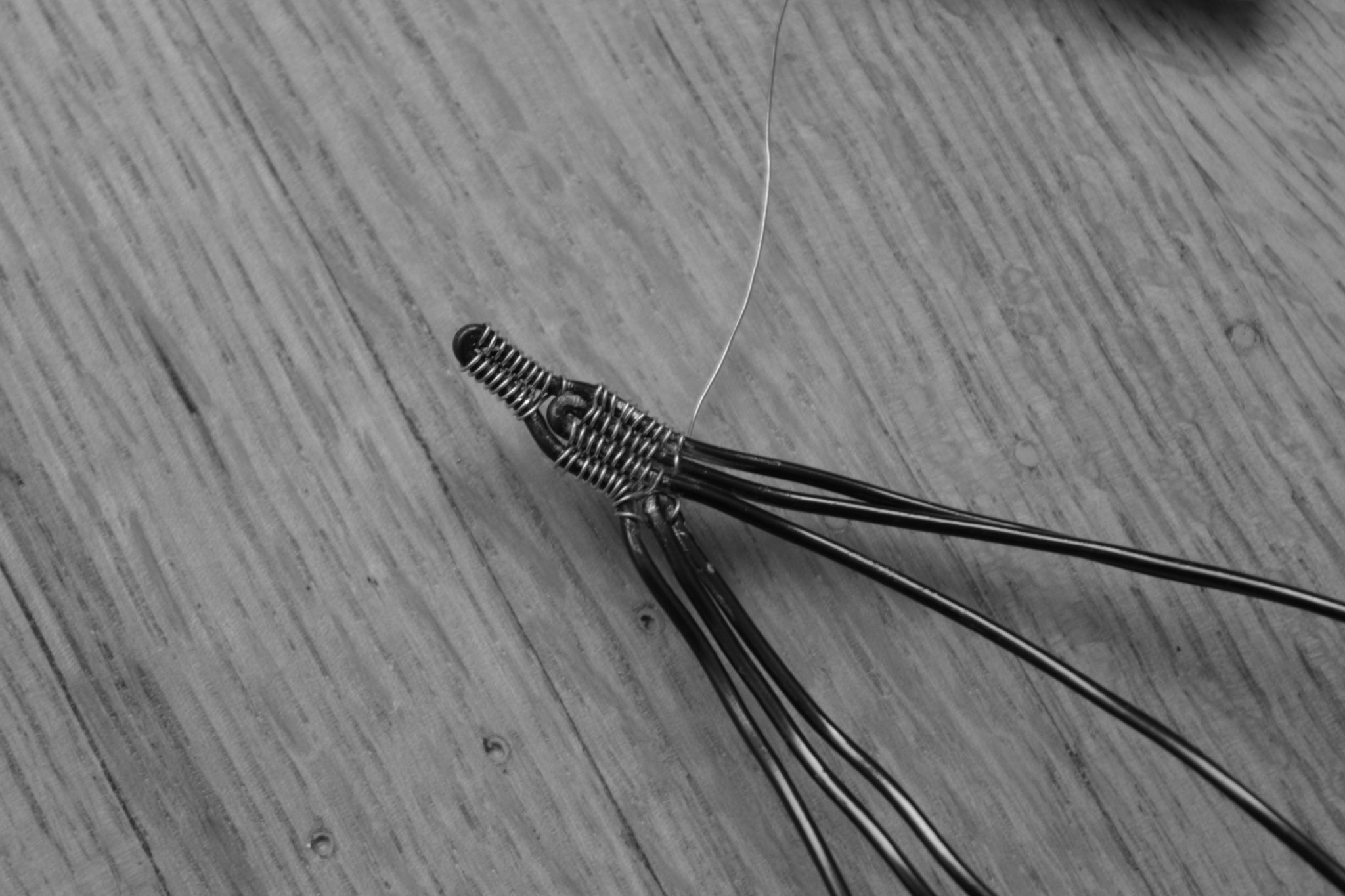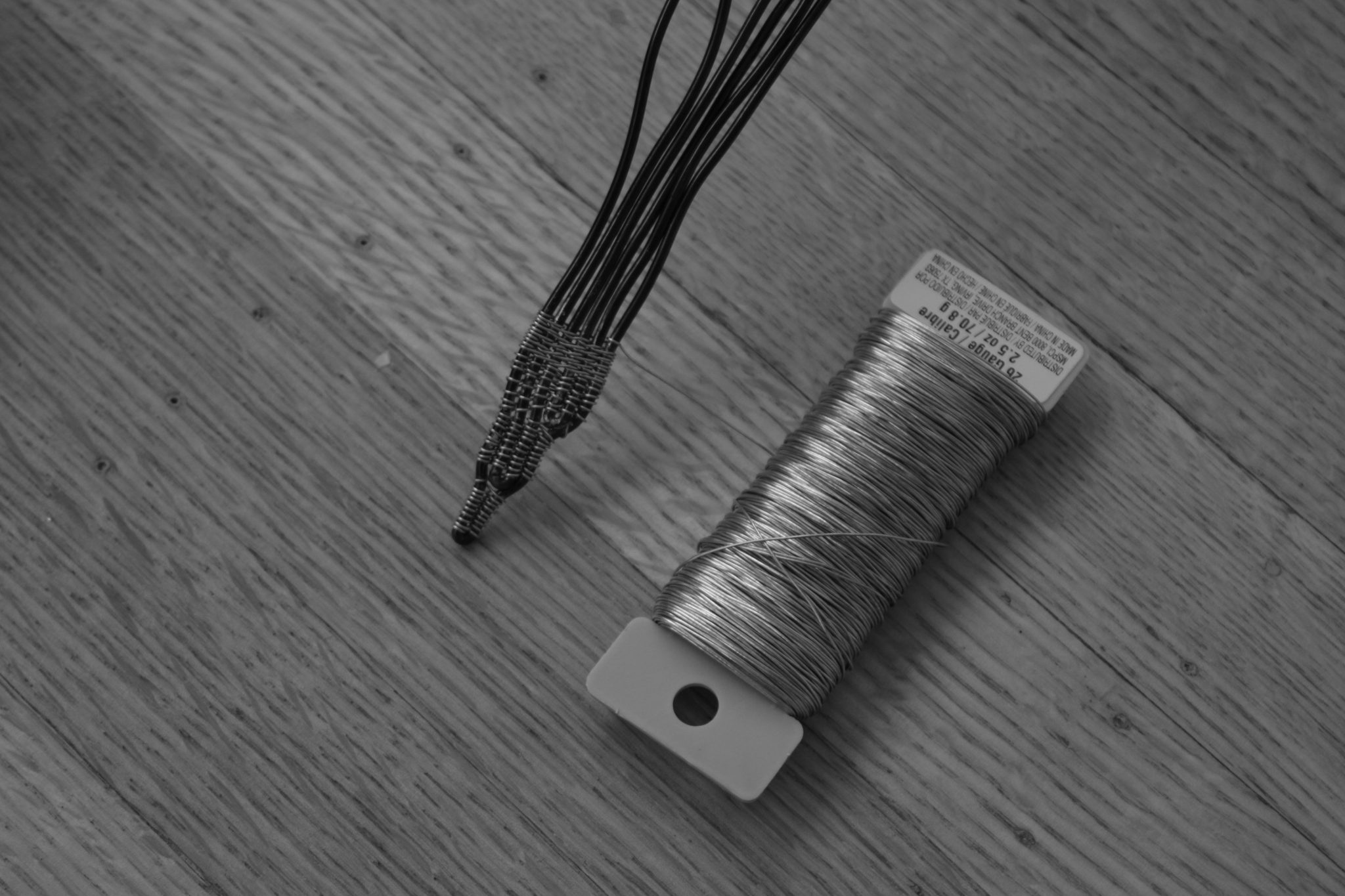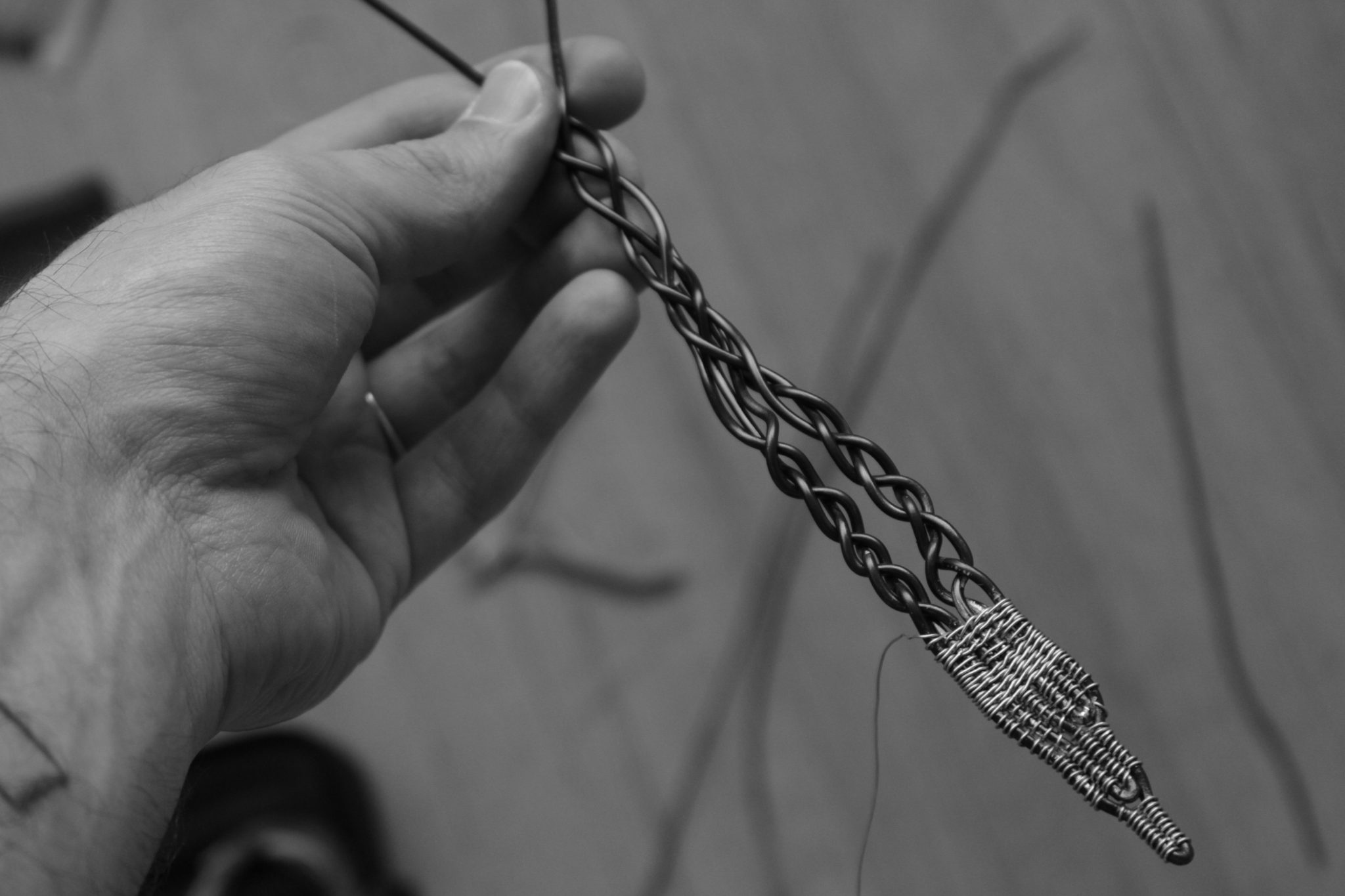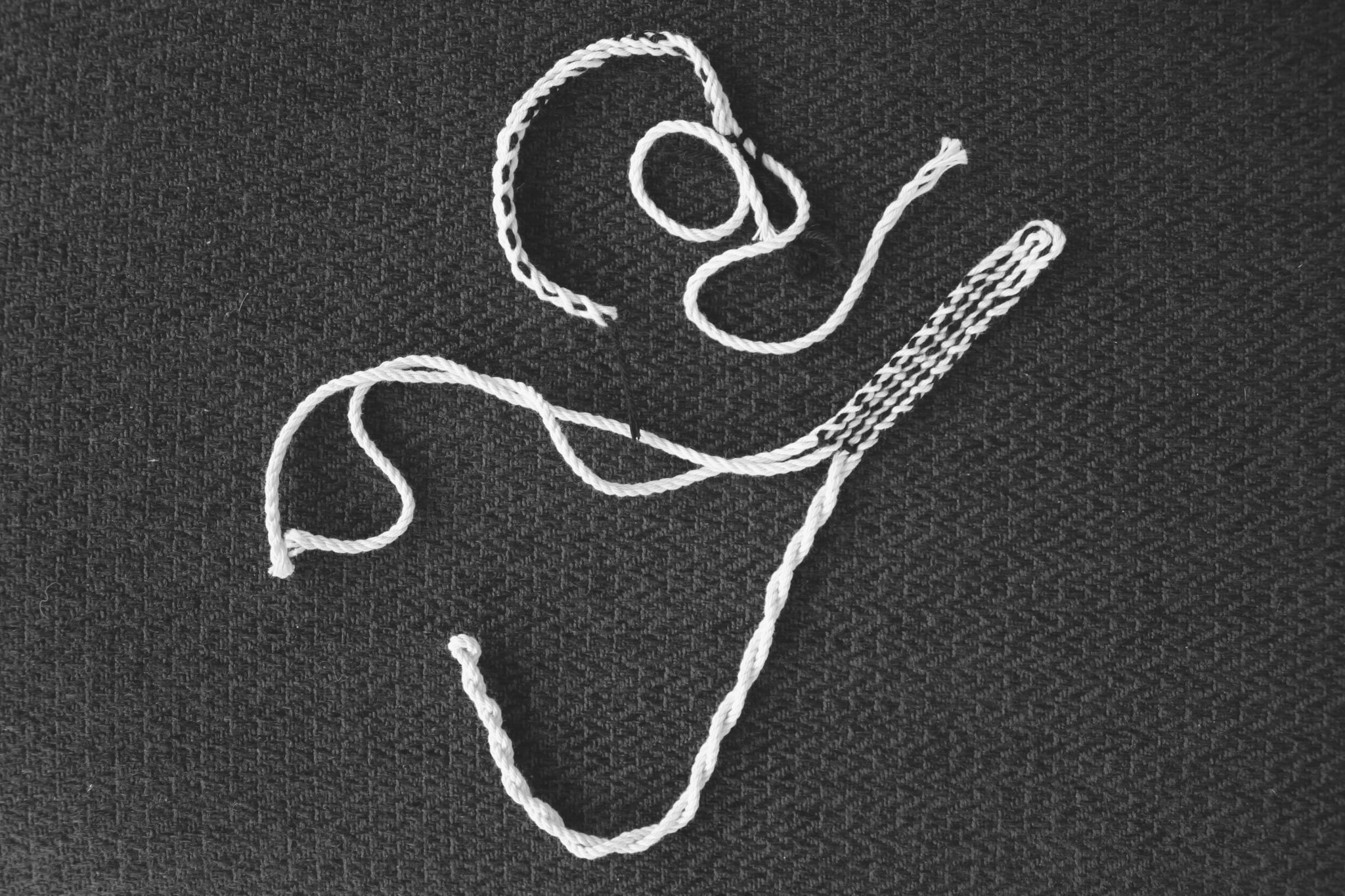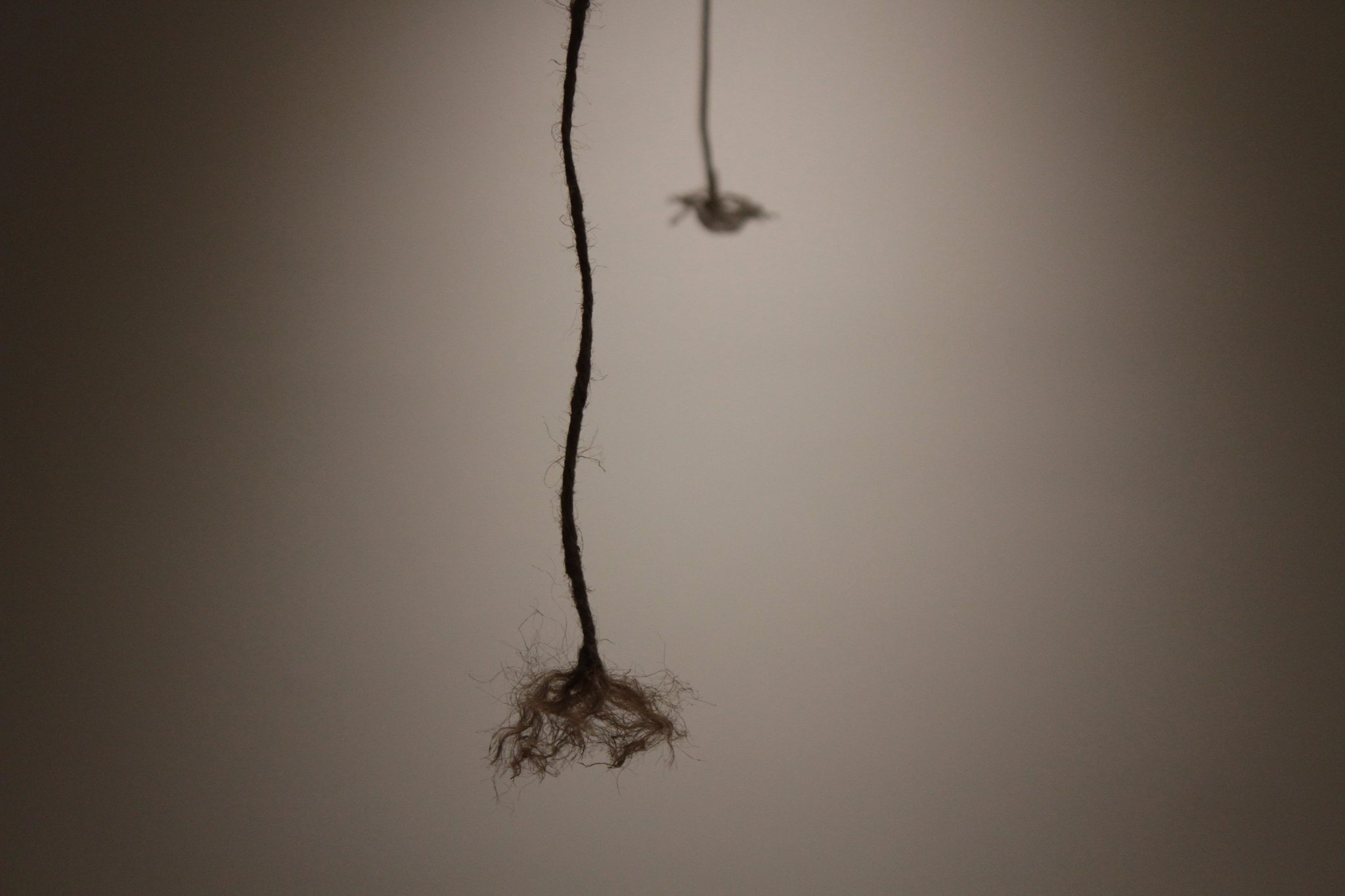The project
My approach for this assignment was to deepen the exploration of weaving by resuming and continuing aspects, observations and reflections about the work done in Project 1. As many of these explorations and their resulting artifacts are quite abstract, a big part of the work in this project consisted of reflecting on what these inquiries mean to me and why I seem to be revisiting some recurrent ideas and themes during the last few months.
The final object I produced for Project 1 was the result of using many different techniques and ways of interacting with the twine (See Aesthetics, in Project 1). For this assignment, I found interesting the idea of exploring how replicating the artifact with different materials and techniques could work and what the outcomes would be. The first variation consisted of the object reinterpreted in wire, and the second was made with jute and green waxed cotton twine. For the wire version, I used the wrap-around technique and, for the jute one, I used ply-split braiding.
Parallel to these objects, I did many little exercise pieces exploring those techniques and others. I also worked with some wire crochet practice bits, but no artifact has come out of that exploration yet. Pictures of some of those pieces can be found at the end of this post.
The wire object
The wire object was the first step I took into this project. The idea was to reinterpret the artifact from project 1 using 14 gauge aluminum wire and 26 gauge wire instead of cotton. The result was an object intimately related to the first one in some aspects while completely contrasting in others.
The technique used for making this object would be the same as the one used to produce the one in Project 1 so, the criteria used was straightforward: following the wrap count, the braid loops and the rope/wire dispositions as strictly as possible.
Naturally, this object ended up being smaller than the one made in cotton (around 3:5), as the wires used were thinner than the twine. In terms of the form, the wire object quite resembles the first one, although the wire being naturally stiffer makes some of the wraps and curves look somehow less fluid than in the cotton version. Although the patterns and shapes look similar between both versions, aesthetically, the materials are quite different. That translates into radically different colours, texture and light refraction properties.
The haptic experience of working with wire for producing this particular artifact was also really contrasting with the previous one and working with cotton. That was easy to expect, and there was no surprise in there. But what I didn’t anticipate was the differences in my state of mind while working on each version, and how the materials could have such a direct impact on that.
When working on the cotton piece, the process was naturally very forgiving and responsive with my hands, and small interactions such as twisting one cord a few turns would generate a fluid and organic movement in the whole object. At some point, it felt like every thread would cooperate to generate movement in the piece. The situation with the wire, on the other hand, was completely different and in comparison, every wrap felt forced as if I was constantly asking the material to respond in ways that were not quite part of its nature. It wasn’t only wrapping; it was also bending, pulling and pushing, and it was still quite a thin wire. The marks of that process are even visible in the object.
It may be relevant to note that the conditions of the making for both those pieces were different on themselves from the beginning. Making the cotton piece was a creative process of interaction with the material and letting it work on its way and suggest the directions. Conversely, when working with the wire I was recreating a particular piece, following pre-established directions and imposing conditions to the material.
The jute object
This paragraphs are yet being written.
This second variation was made using jute and waxed cotton twine. Because of being made with cords instead of wires, this object was more related to the original piece than the previous variation in the form-determining aspect and haptic experience.
Although the similarities in terms of materials used, the technique employed was different, and that had a direct impact on the final form, aesthetics and size of the object. For this variation, I worked with ply-split braiding so, instead of wrapping around the big cord, I would be going through it. Wraps would become stitches, and so I followed the count in the cotton object so that one wrap would equal one stitch. Object 1 is a combination of different wrapping patterns that weren’t possible to reproduce here. Nevertheless, those changes still occur and respect the frequencies but differently. For instance, going through below different amounts of braids in contiguous cords, therefore showing more or less green twine in the surface, etc.
Because wraps would pile tightly against each other, and stitches would need a minimum space one from another, the object’s dimensions changed considerably, and the jute one ended up being twice as long. In those places where the big cords would braid or wrap around themselves, the scale was almost the same (9:10) between the jute and cotton versions, respectively, as the cords were similar in diameter. As a result, the proportion between the parts changed considerably in this variation, and the object ended up stretching.
The form of this object was also very much determined by the material and the technique. The twine going through the thicker cords and following its undulations seems to have given the piece an own spiralling movement that the cotton version doesn’t have. Naturally, splitting and spreading the thin braids was also possible with the jute for replicating the finishing technique from object 1, something not possible with the wire version.
The making experience was different from the ones with the other objects as well: focusing on finding the correct spots for stitching through the cord instead of thinking about the wrapping patterns was an enjoyable change of procedure and interaction with the material. Changing the technique made this process very interesting, as that allowed different situations and outcomes to happen in the making of an object that was already familiar to me. That generated a feeling of novelty similar to the one I had experienced with the cotton object forming itself throughout the making.
Some reflections
Working on these last two projects, I found some compelling aspects that can surely complement my practice and are worth exploring and developing.
One of those things was the meditational quality of the weaving or similar kinds of work. Although I’ve always been observant and reflective about the tasks in my craft, there’s something about the nature of weaving that makes it easier for me to observe and reflect while making. Of course, compared with woodworking or metalworking, I’d say things were quieter, cleaner and less rough and dangerous, and the whole setup and mindset are completely different. That already changes a lot, but I think there’s also something related to the repetition and the speed at which things elapse that I’ve found very meditative. I’m used to loud tools, dusty surroundings and clothes, cutting, grinding, drilling, hitting and heating things, but this was a very different way of making and something very compelling.
There’s something about the form, aesthetics, textures and the kind of movement possible with these objects that I hadn’t engaged with before. There’s even something related to gravity in these kinds of objects that suggest to me a different perspective. It’s quite simple actually; but I’m used to making sturdy, heavy functional objects that are supposed to anchor themselves against the floor, hopefully moving as little as possible and these objects are quite the opposite of that: they’re light, undetermined and suspended objects that will move and shift with a breeze.
